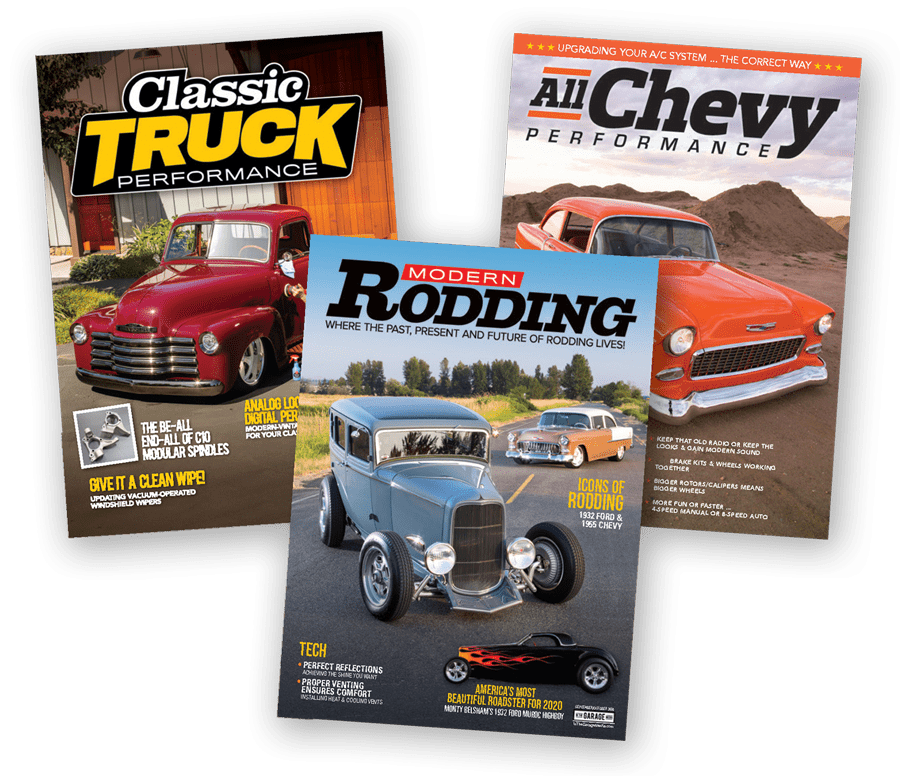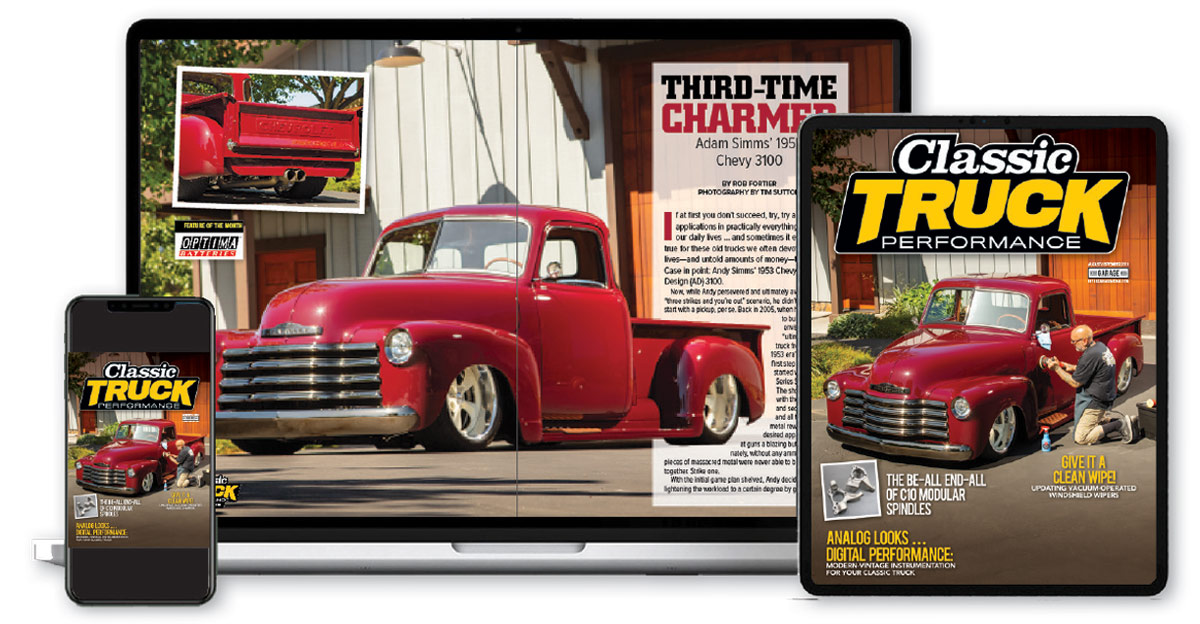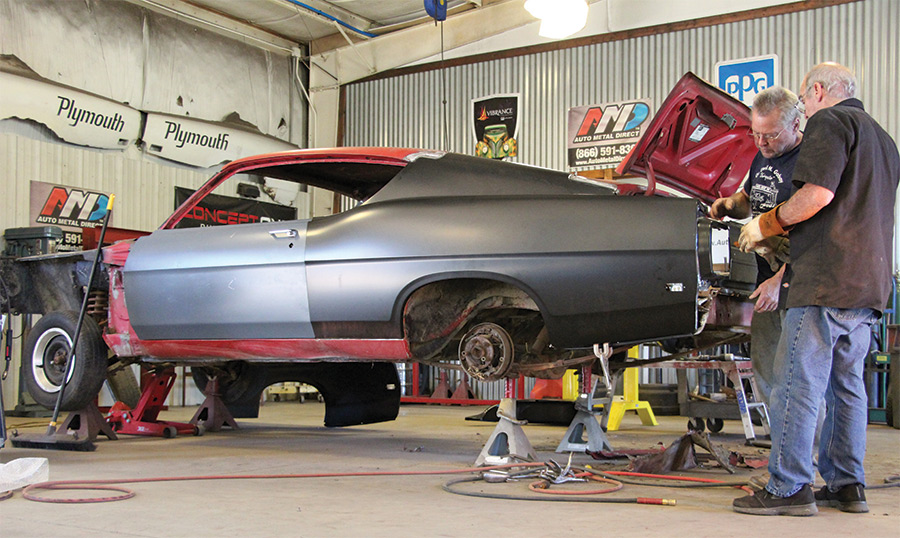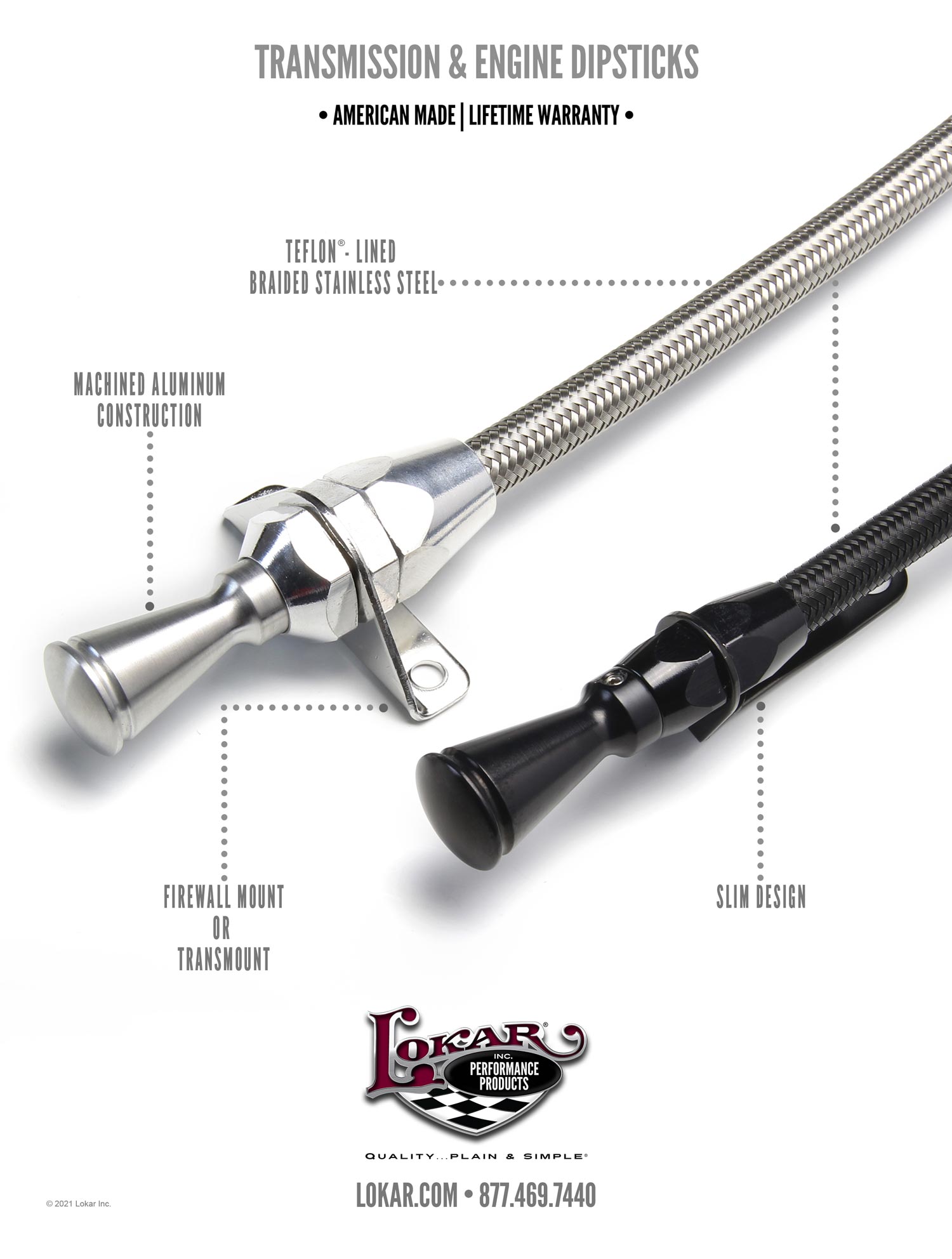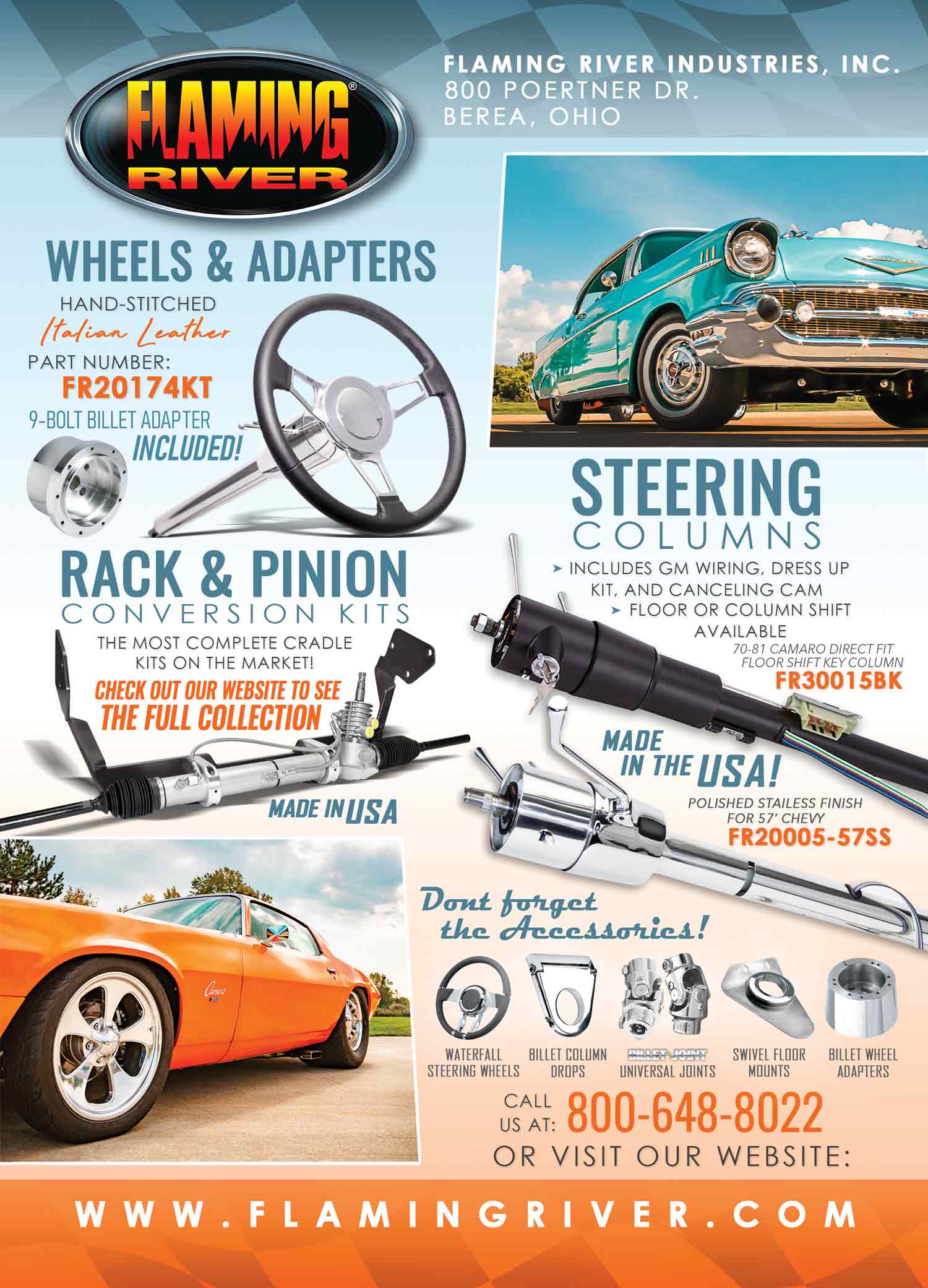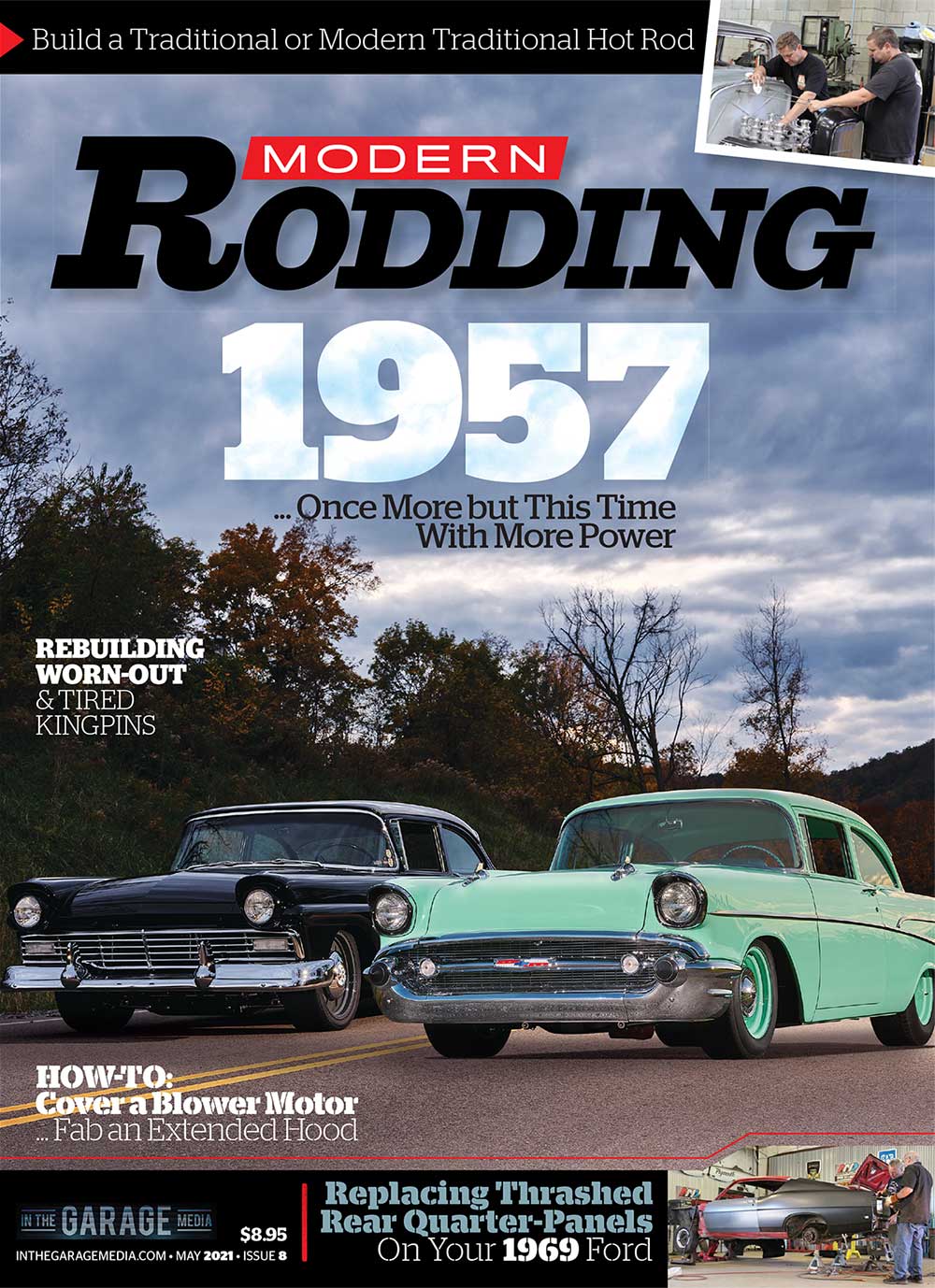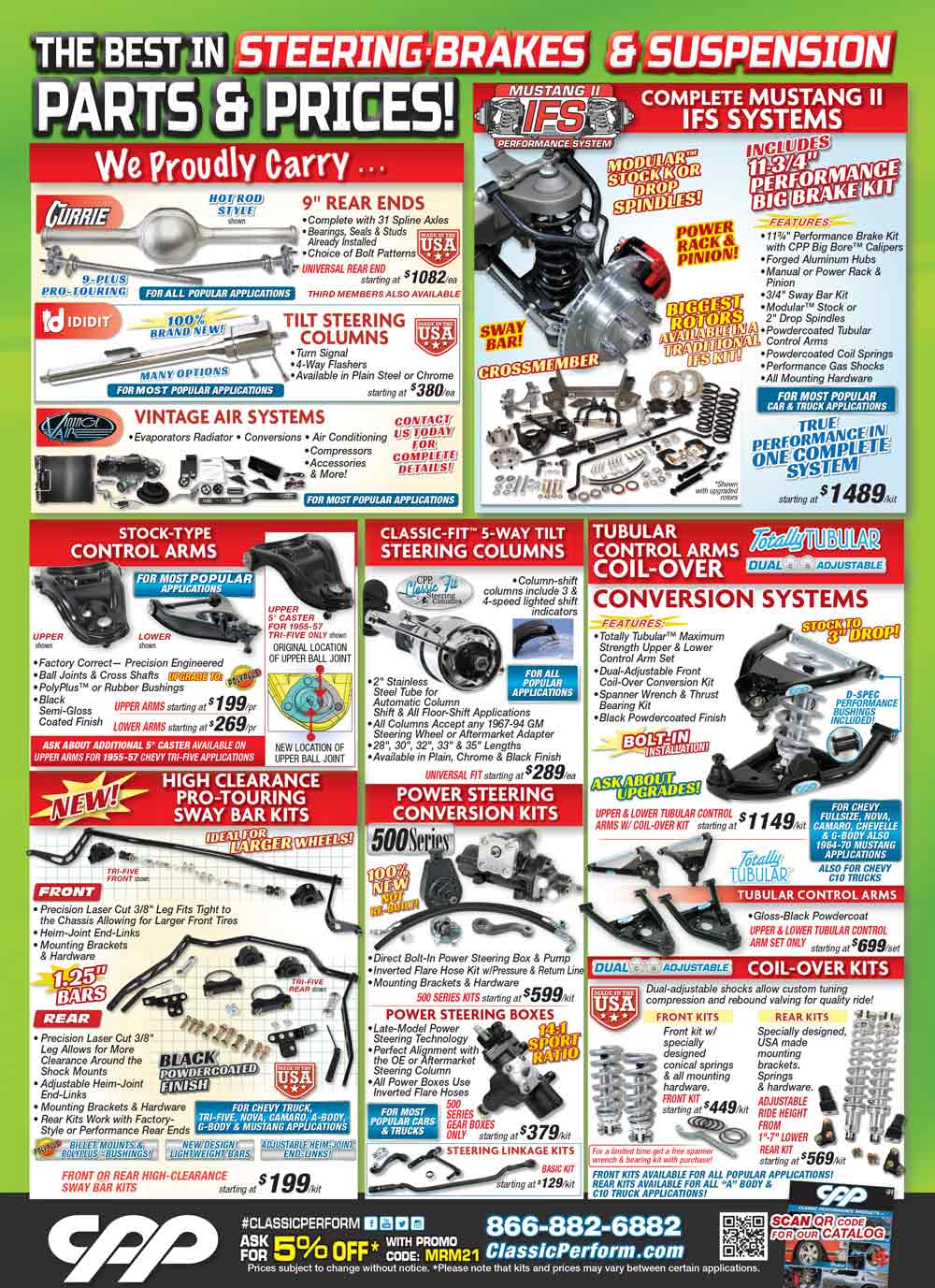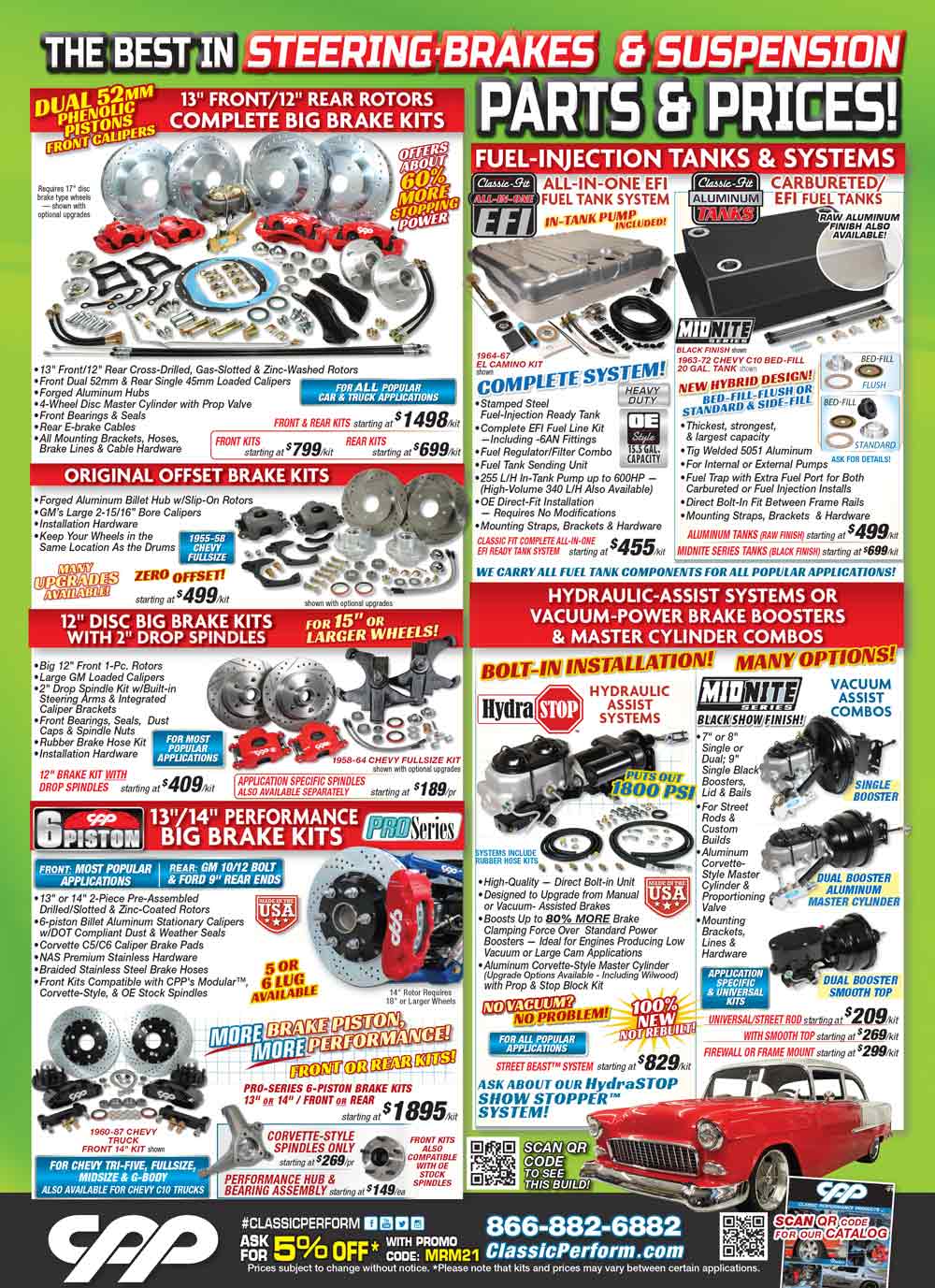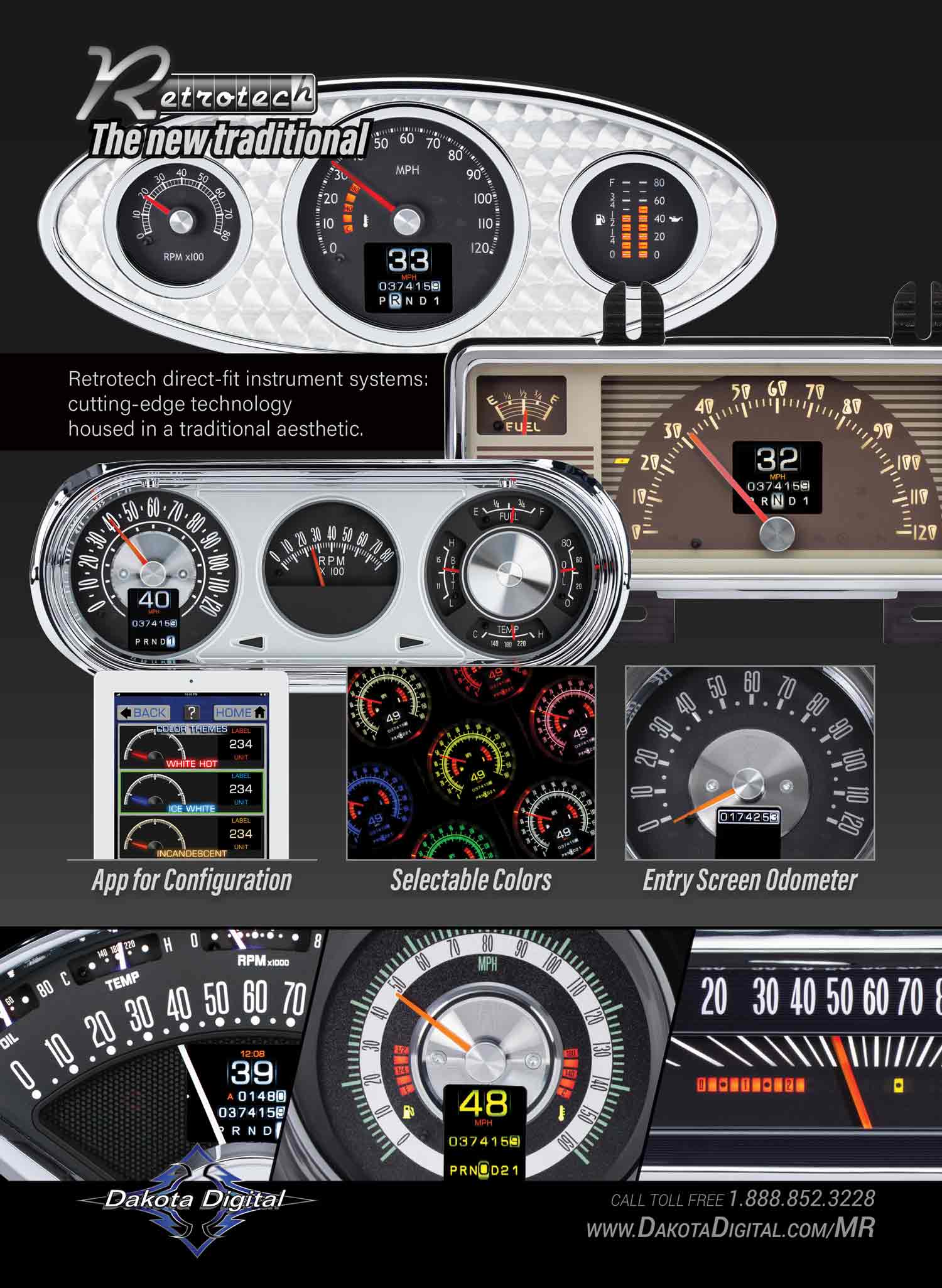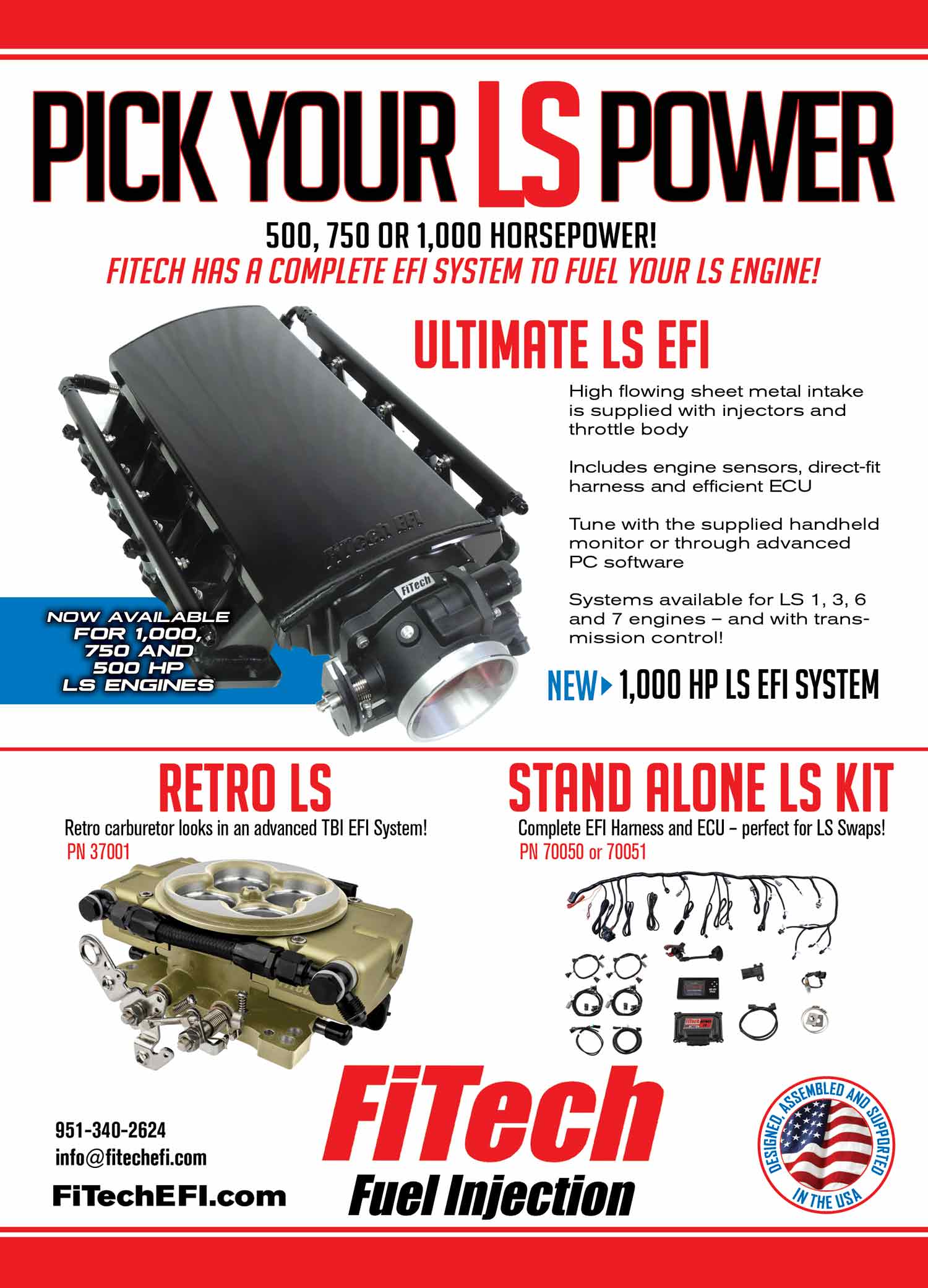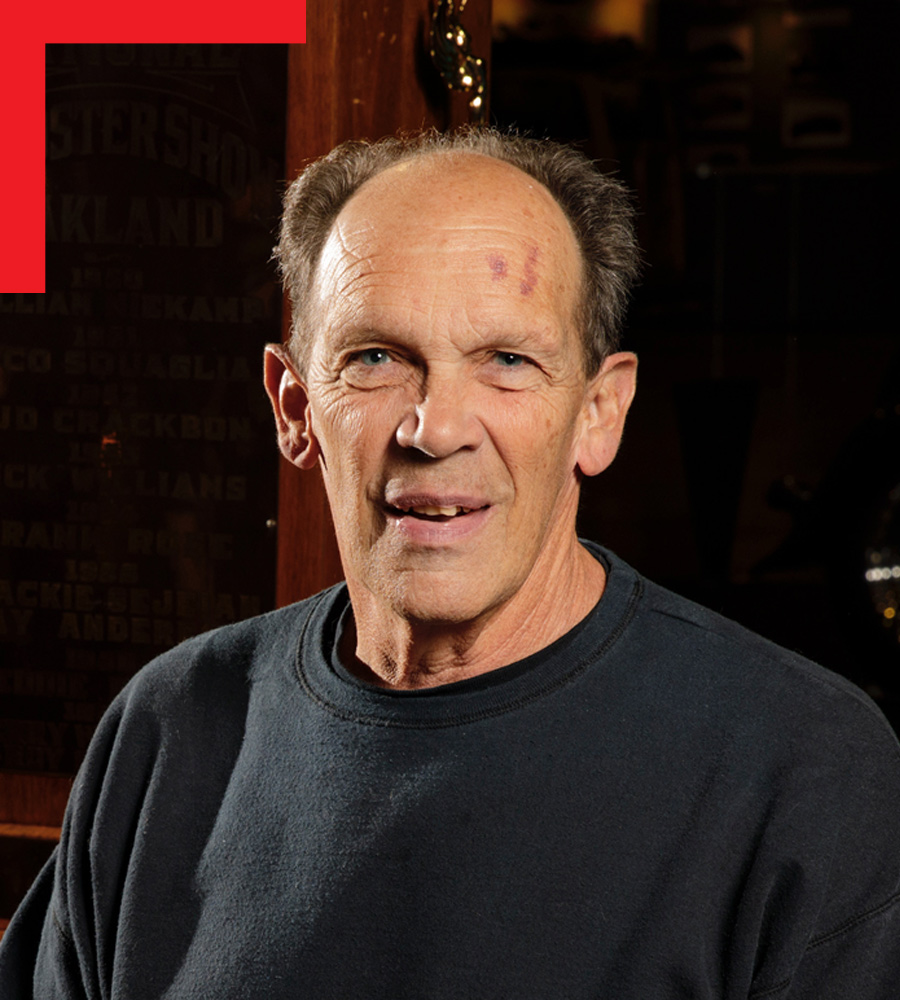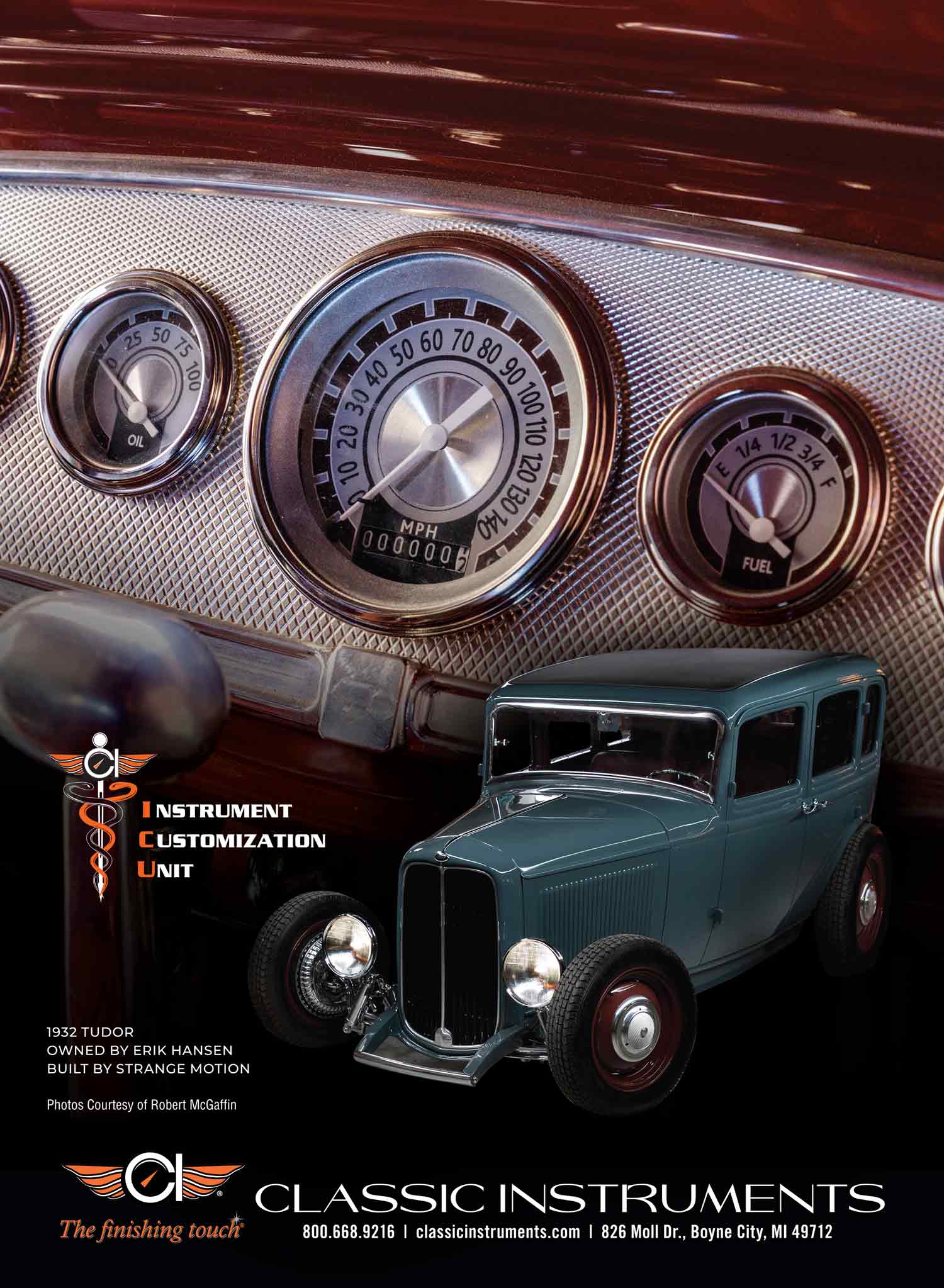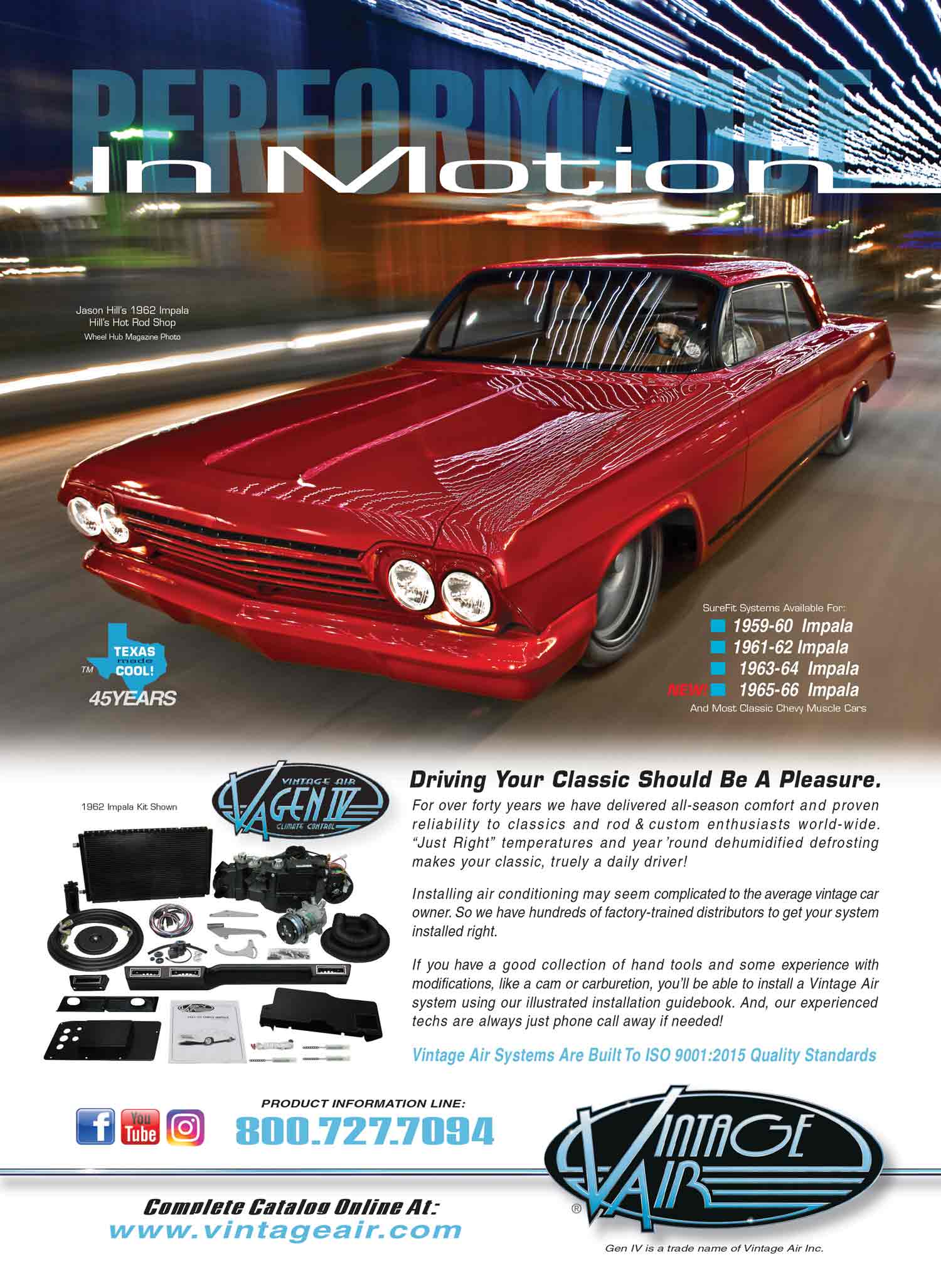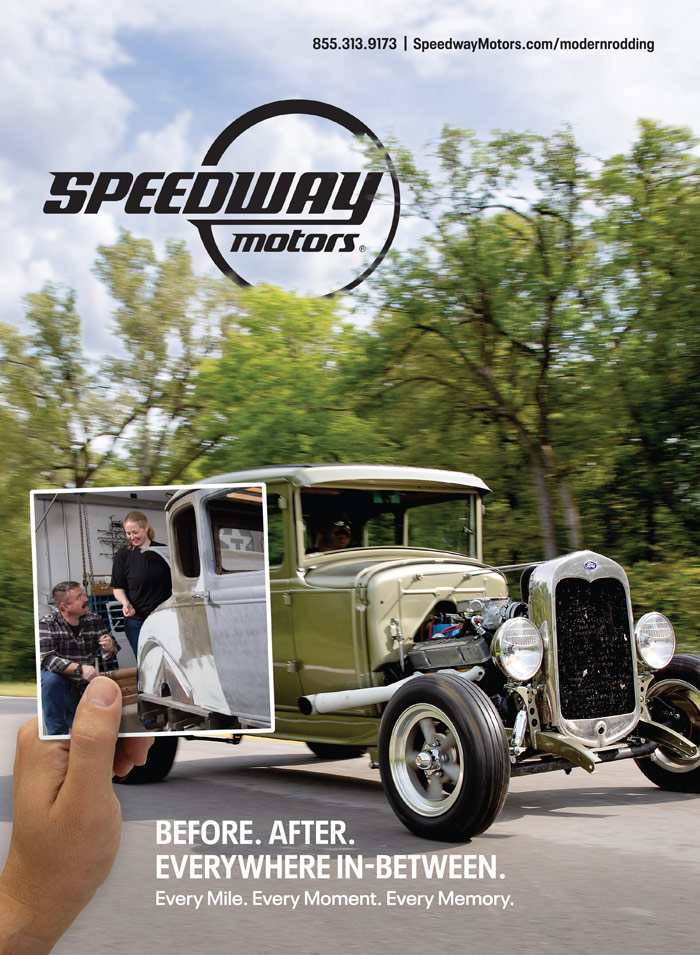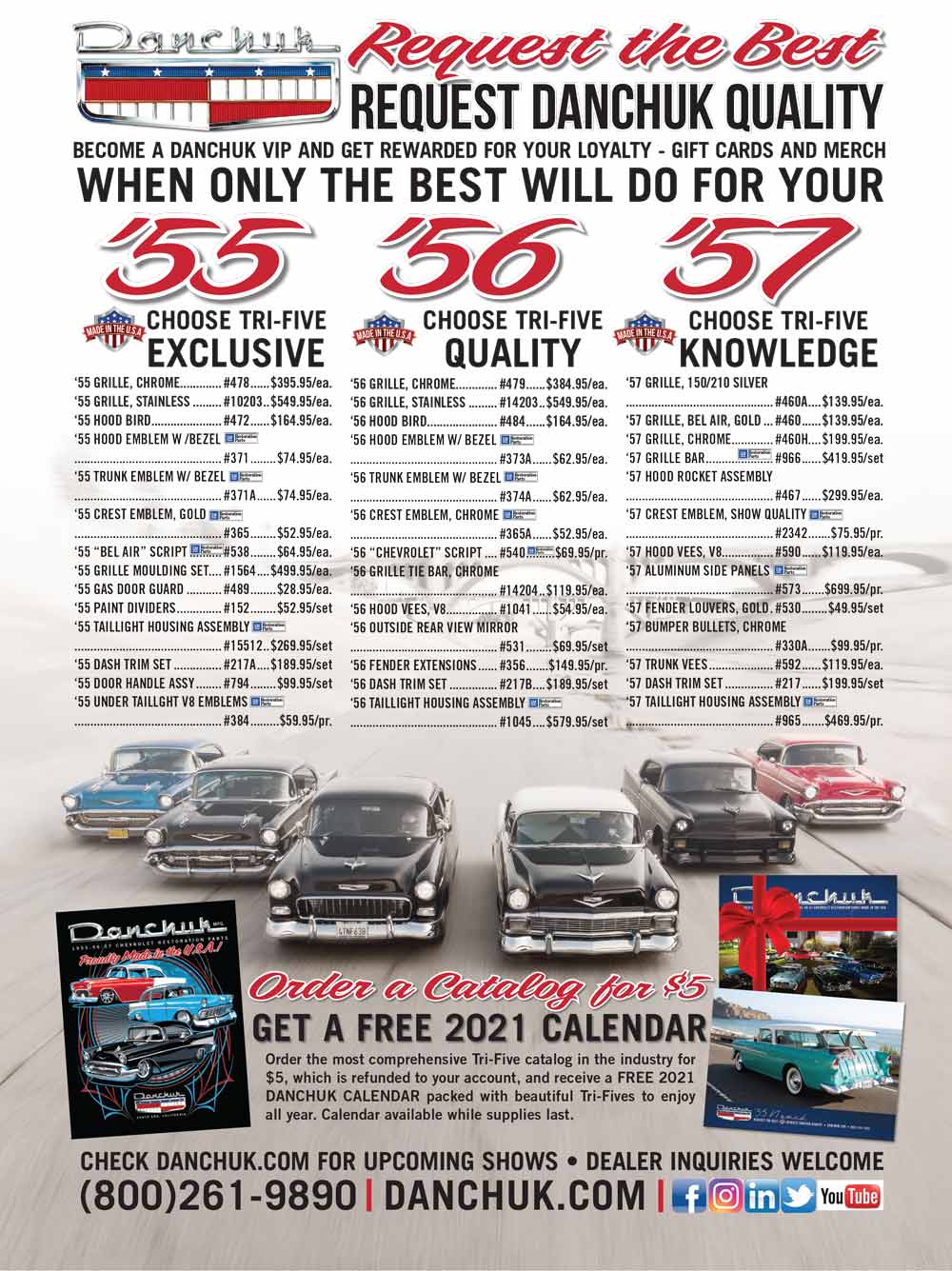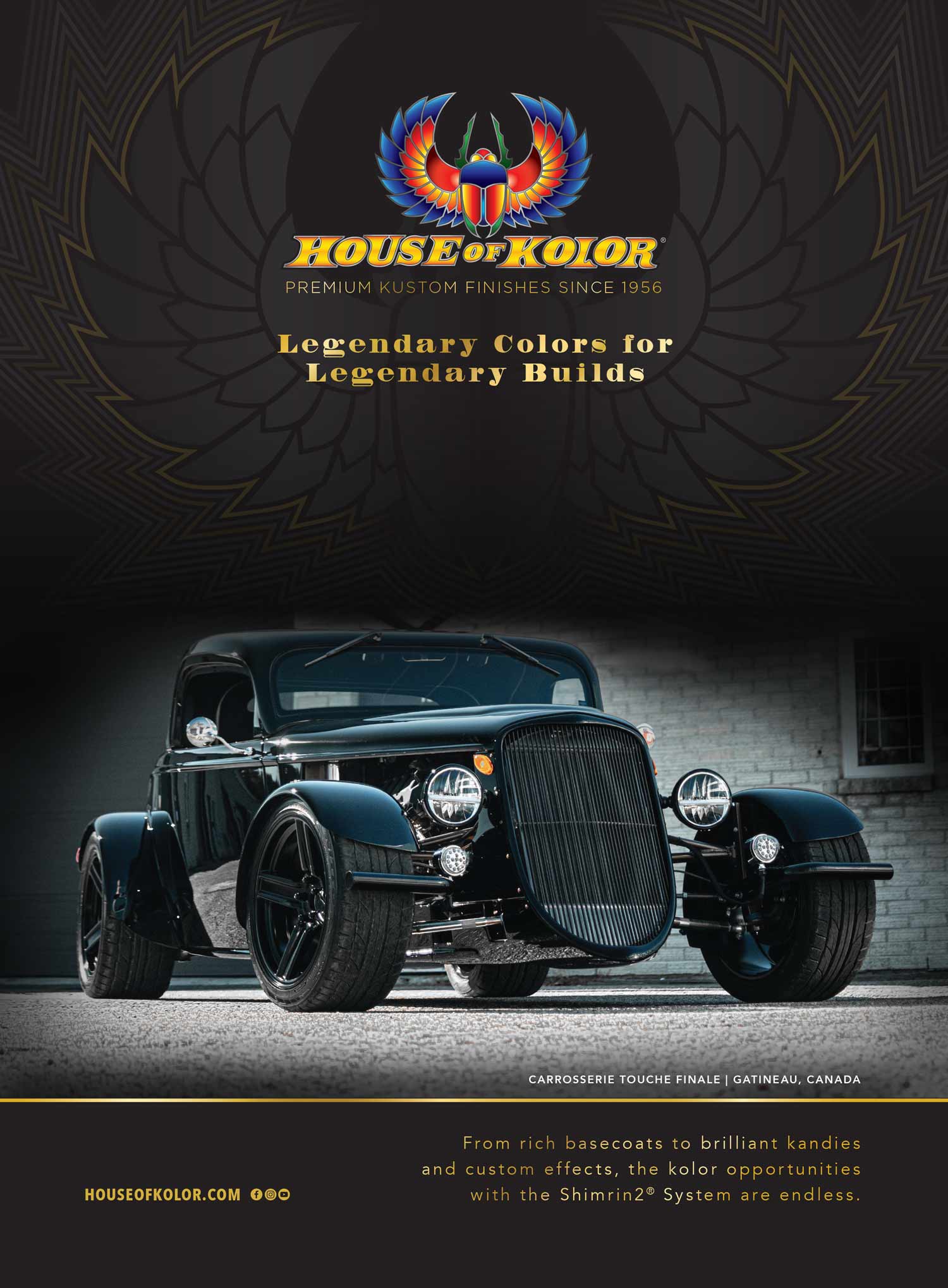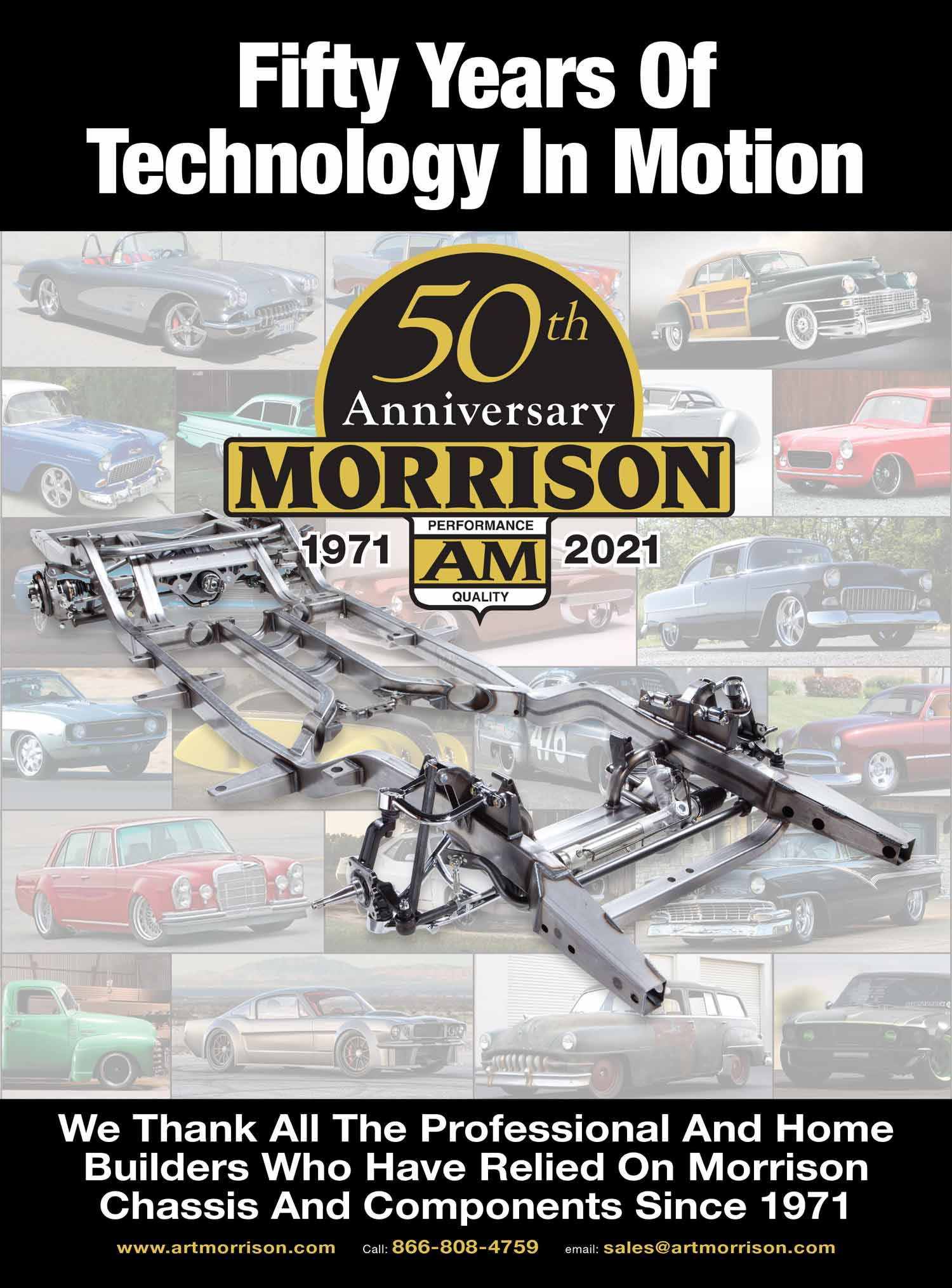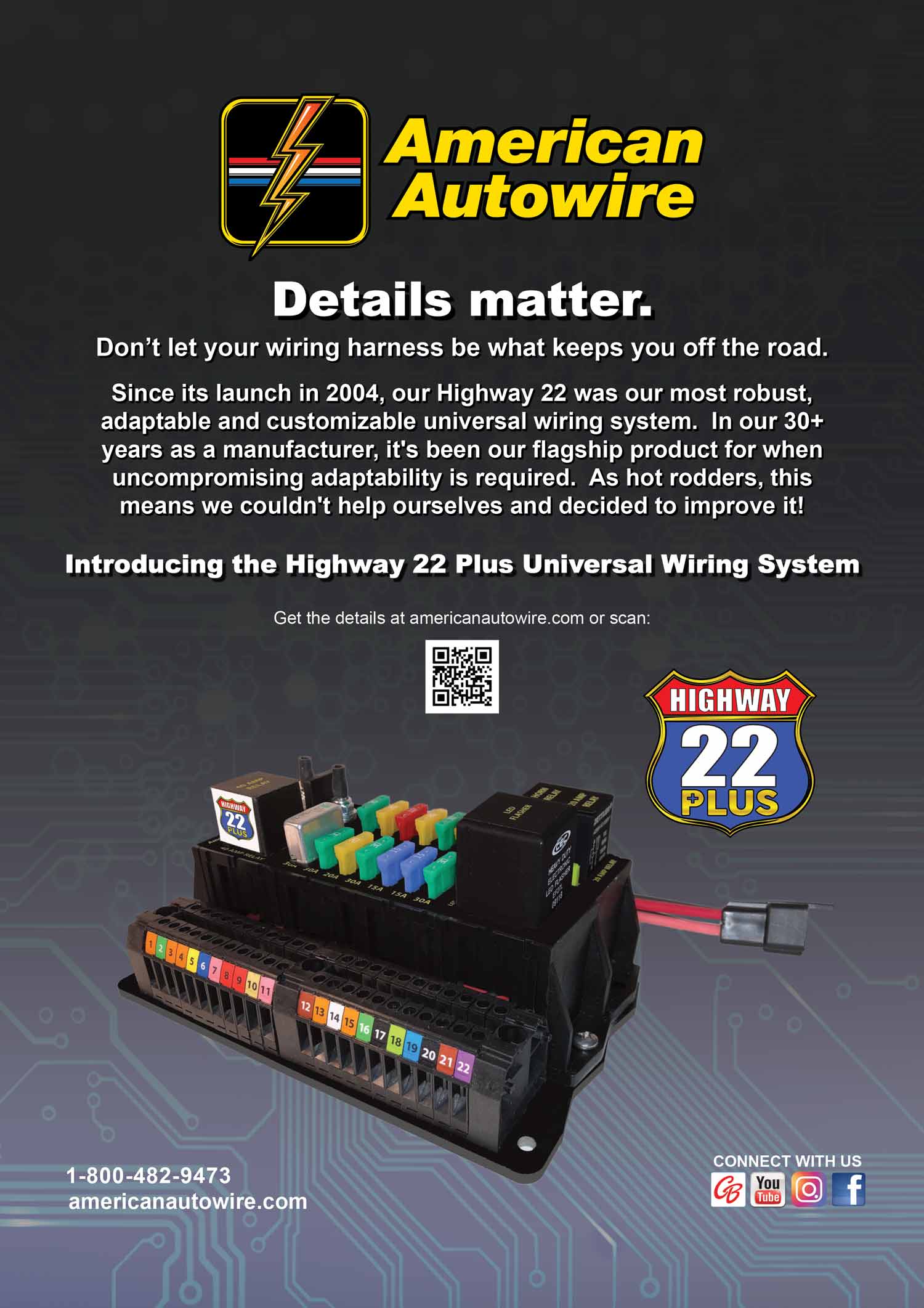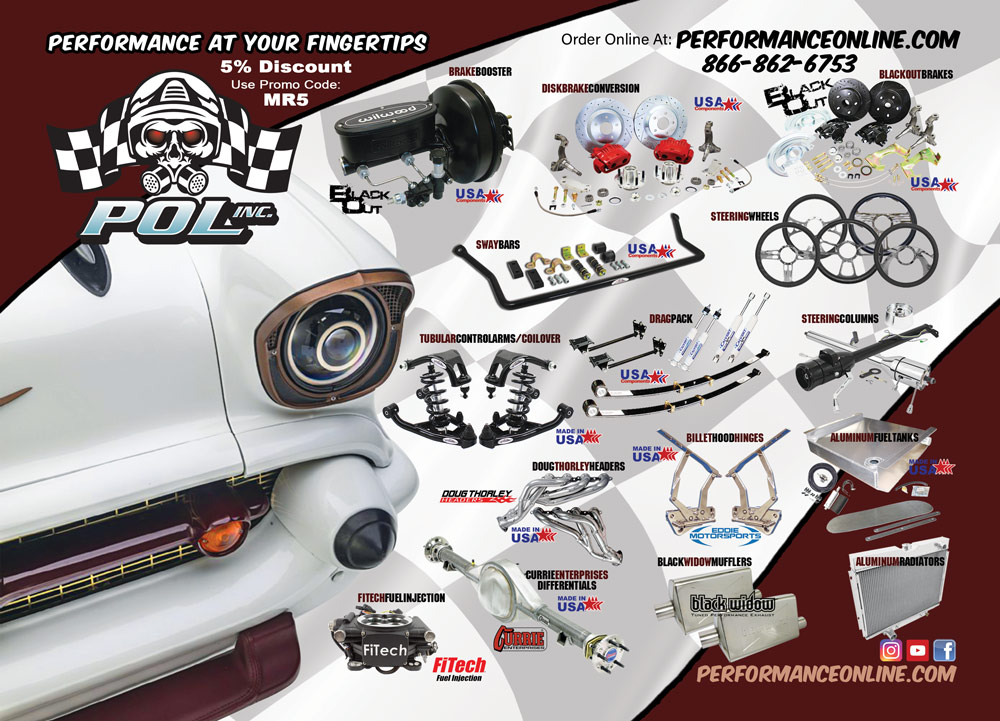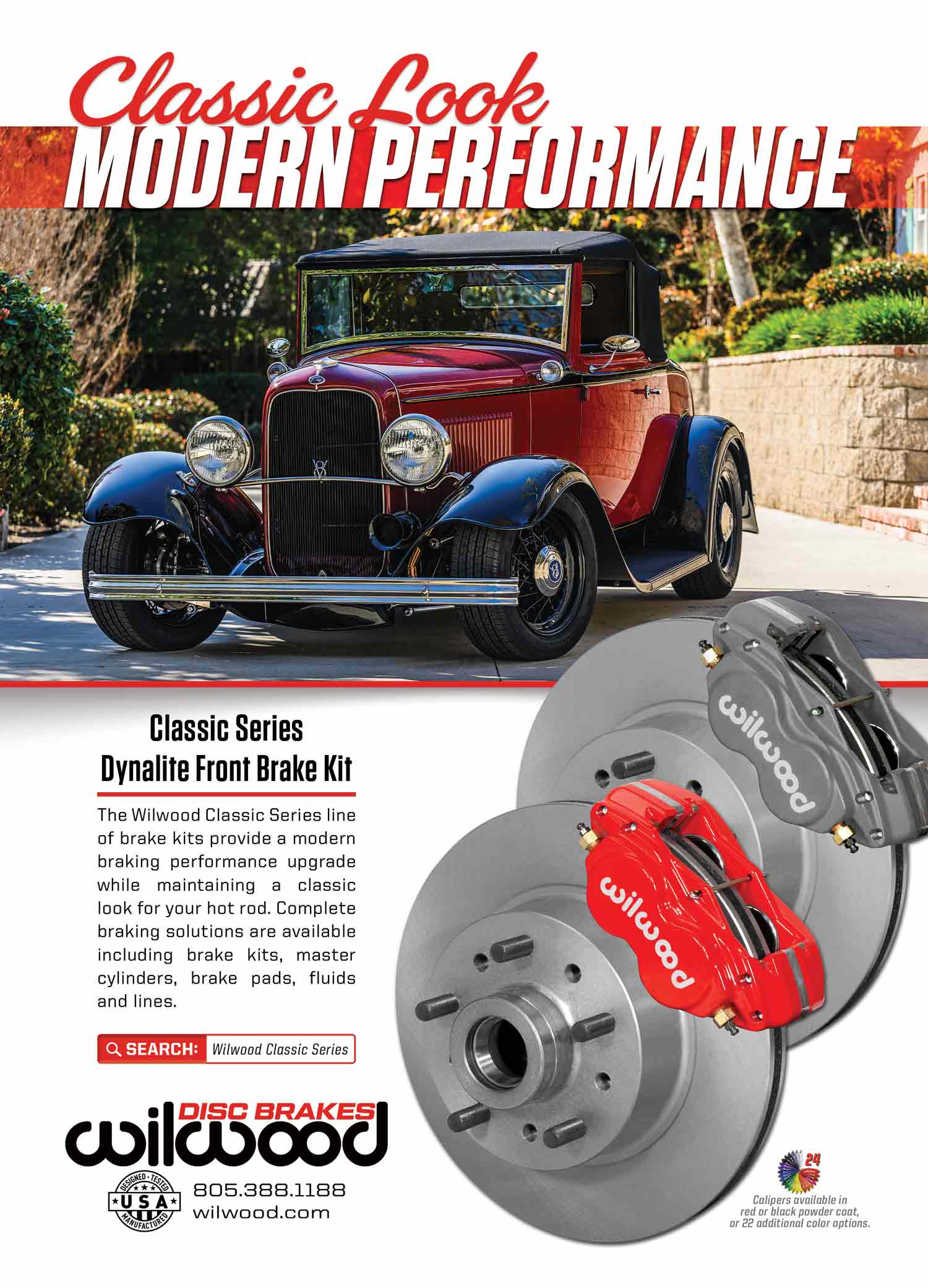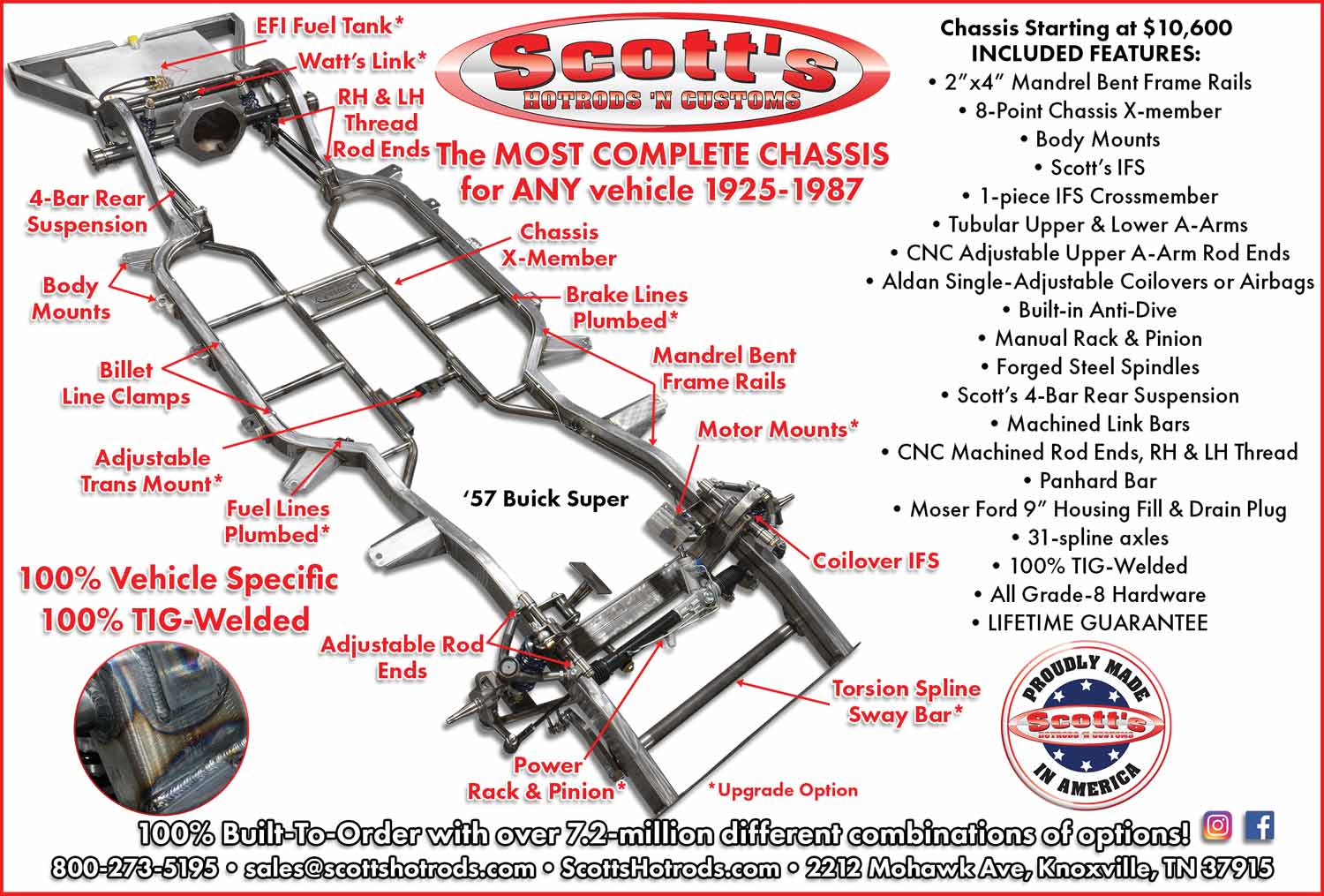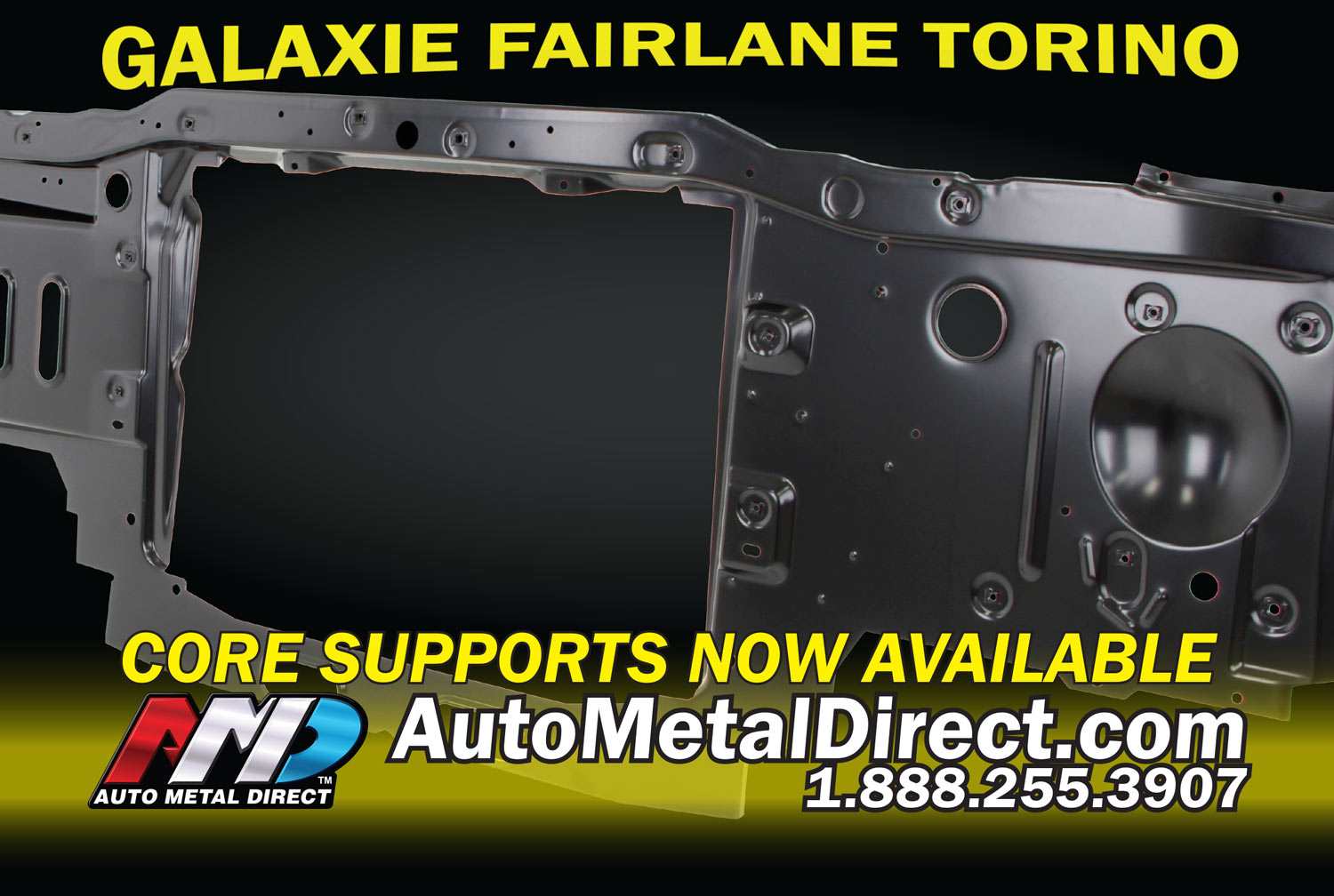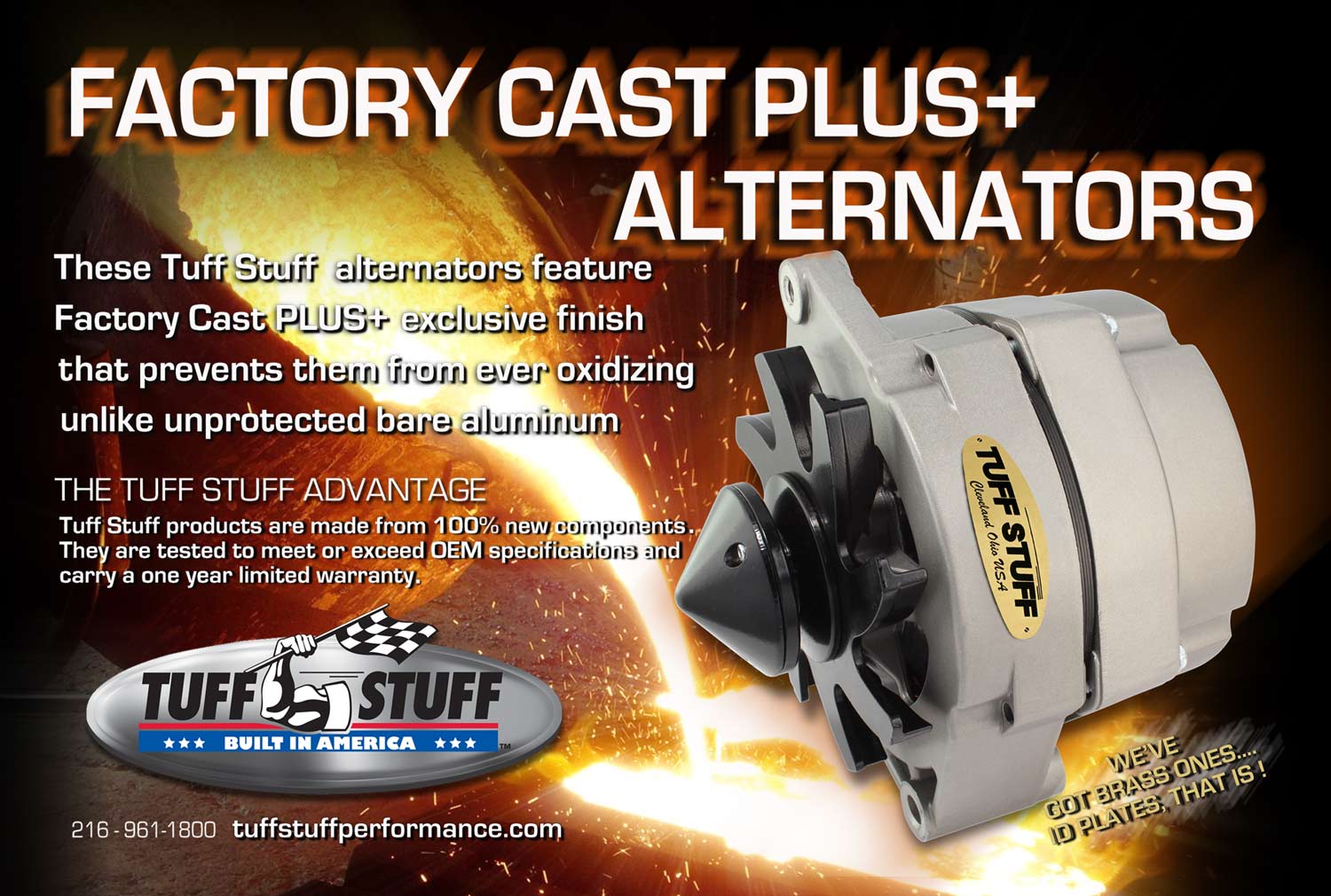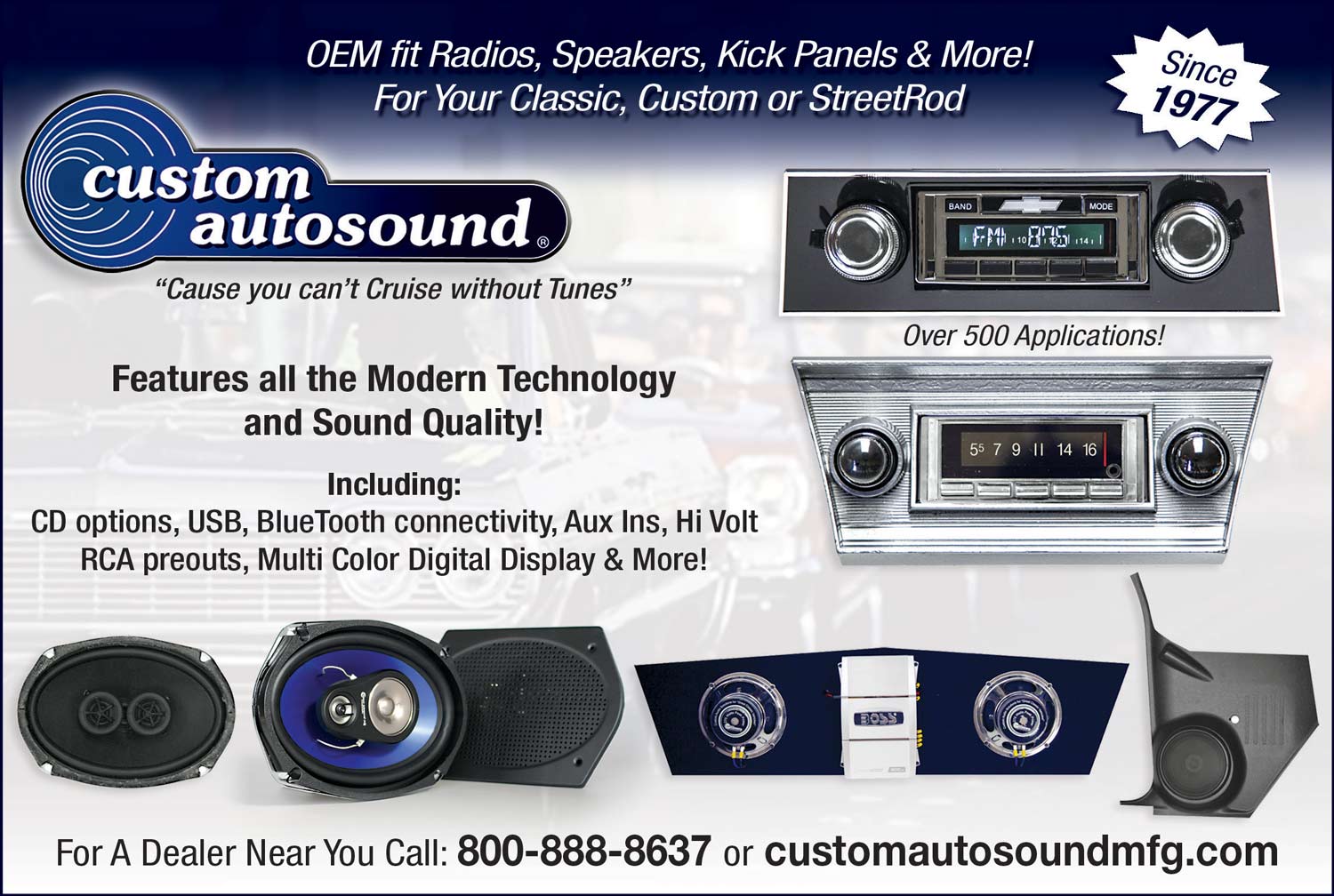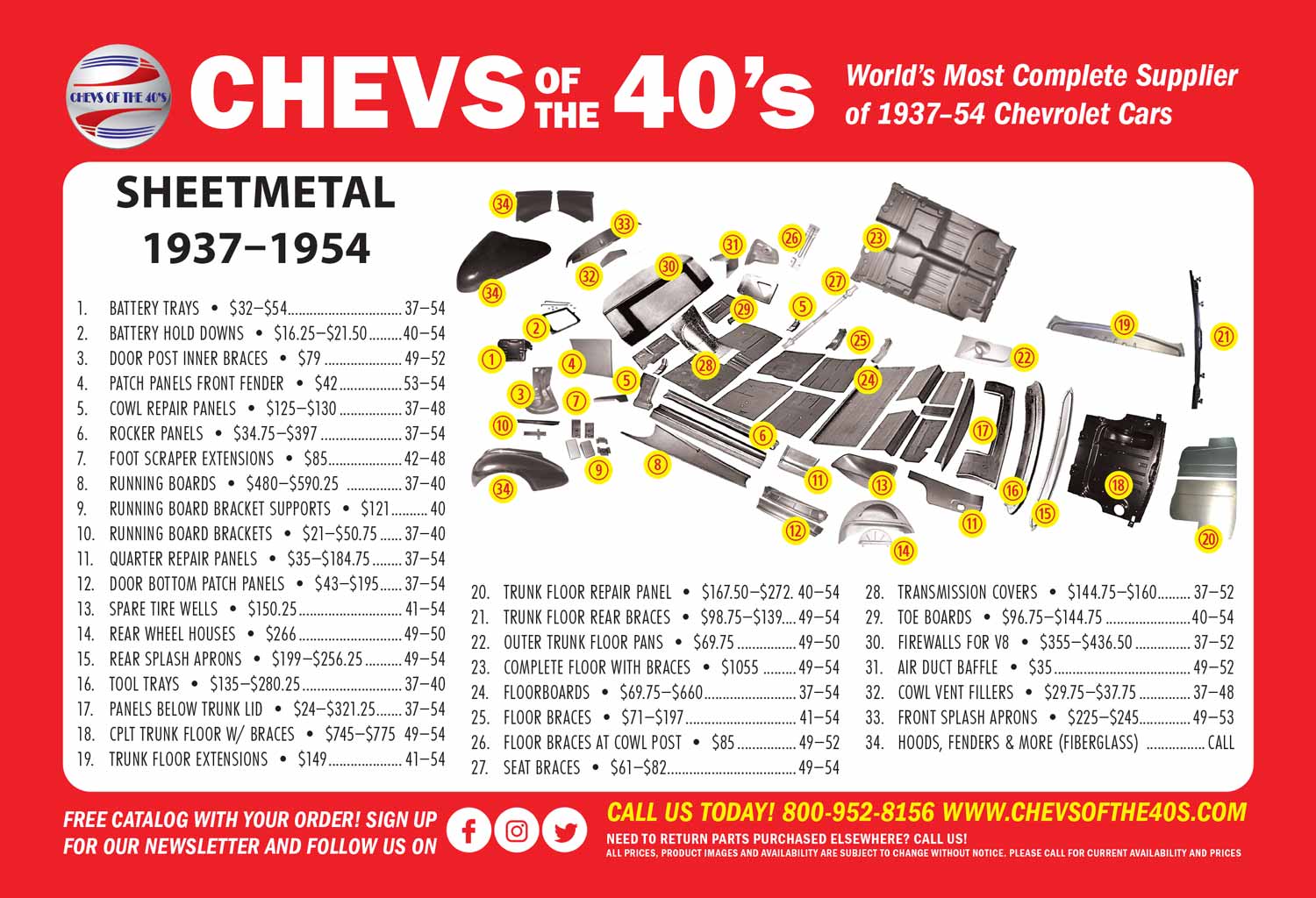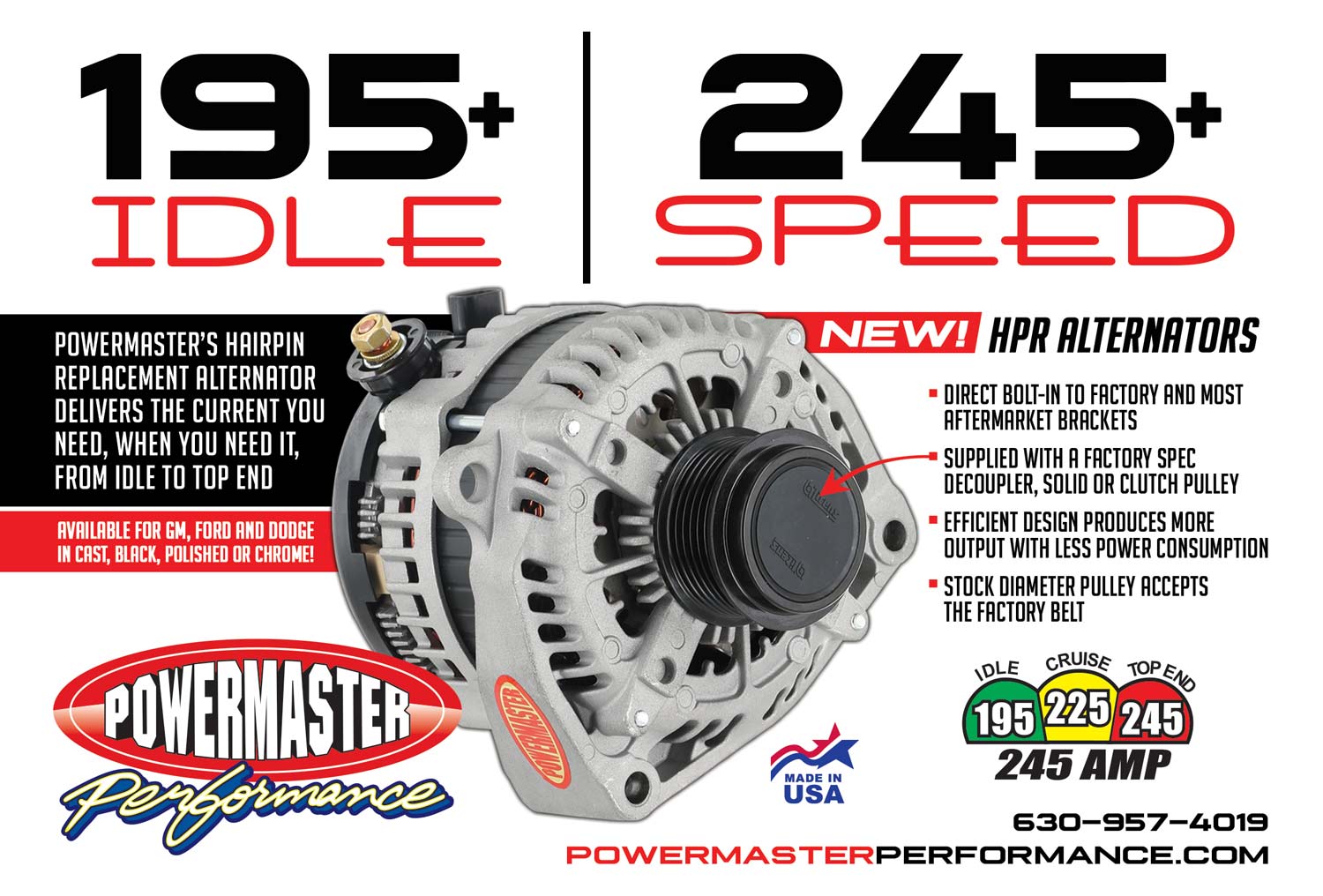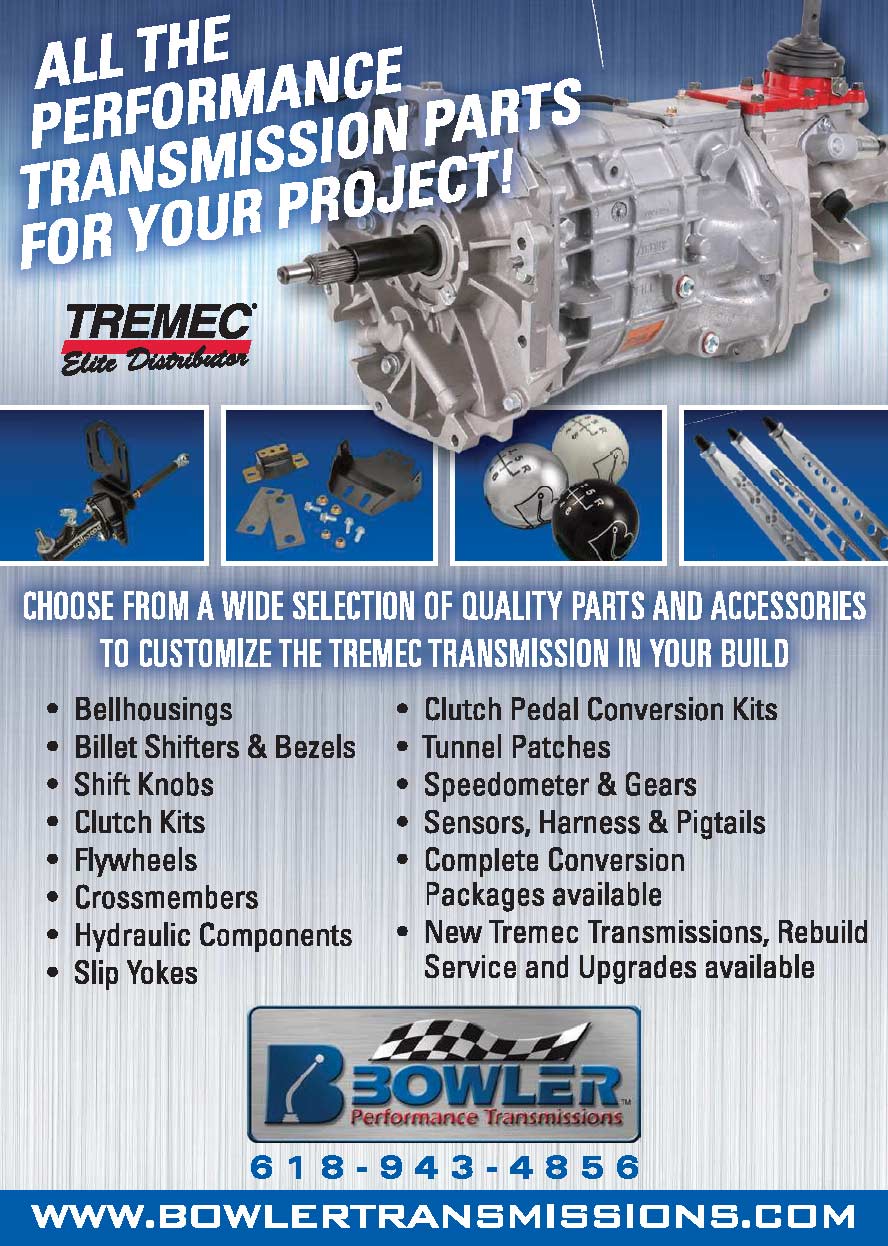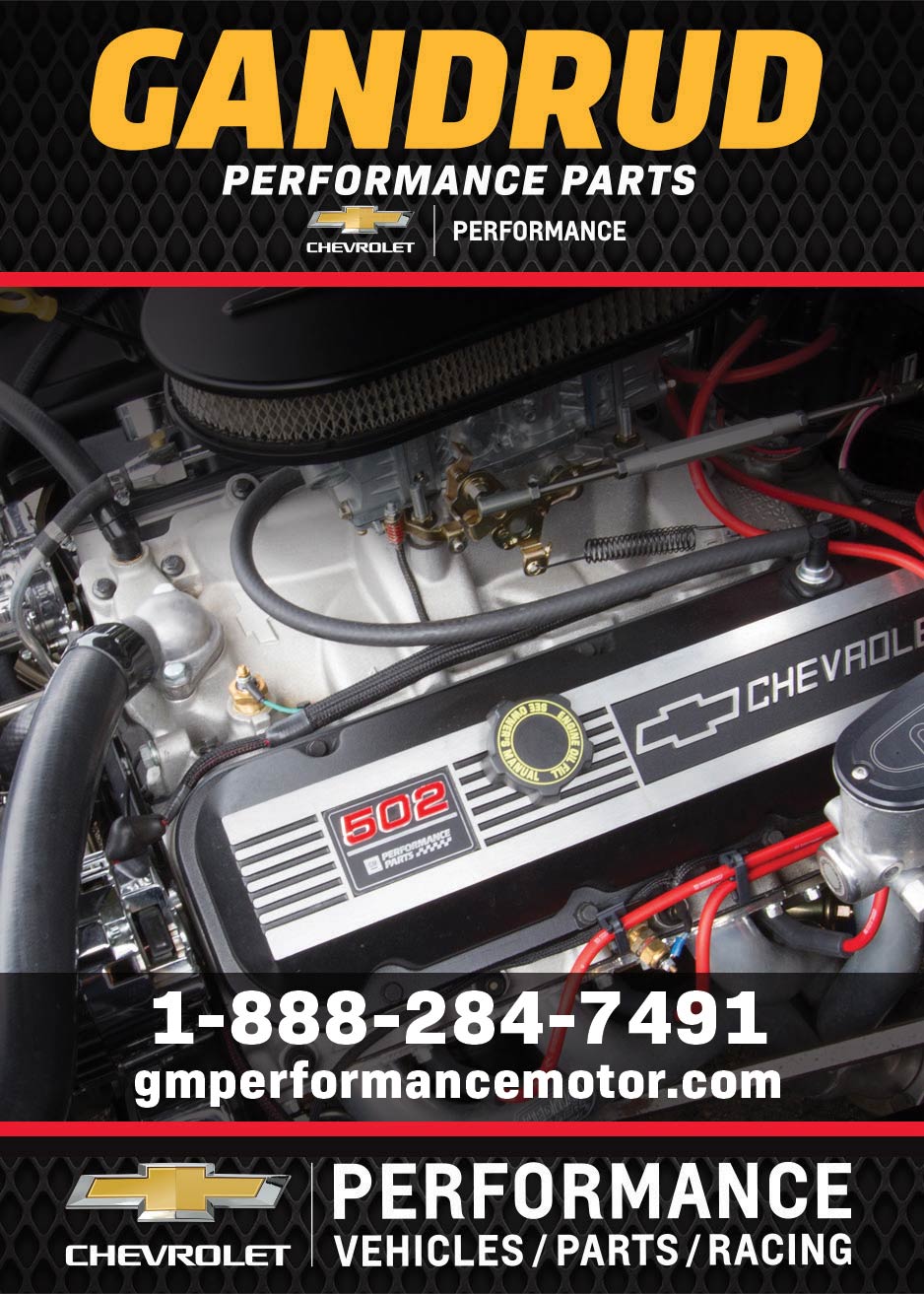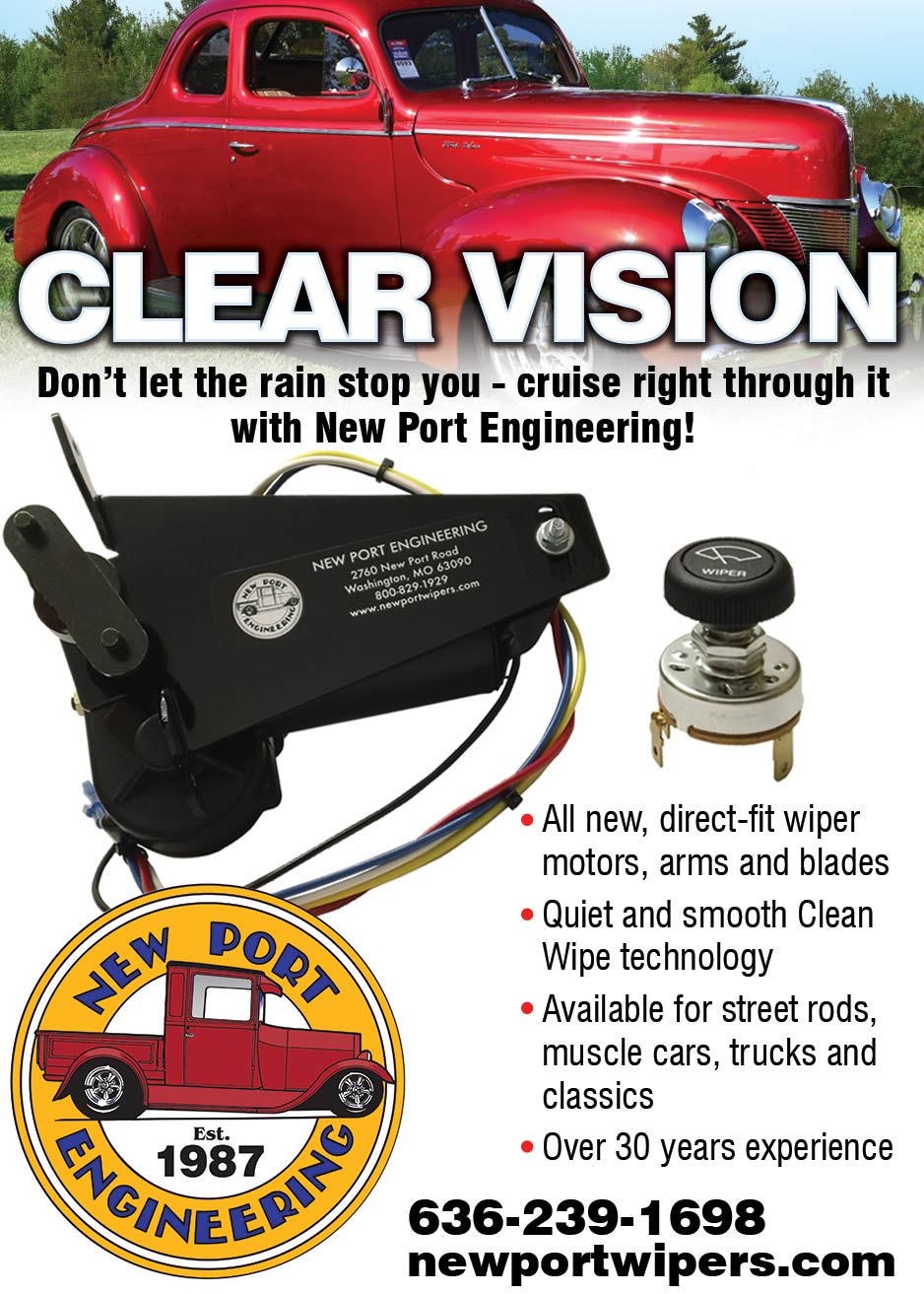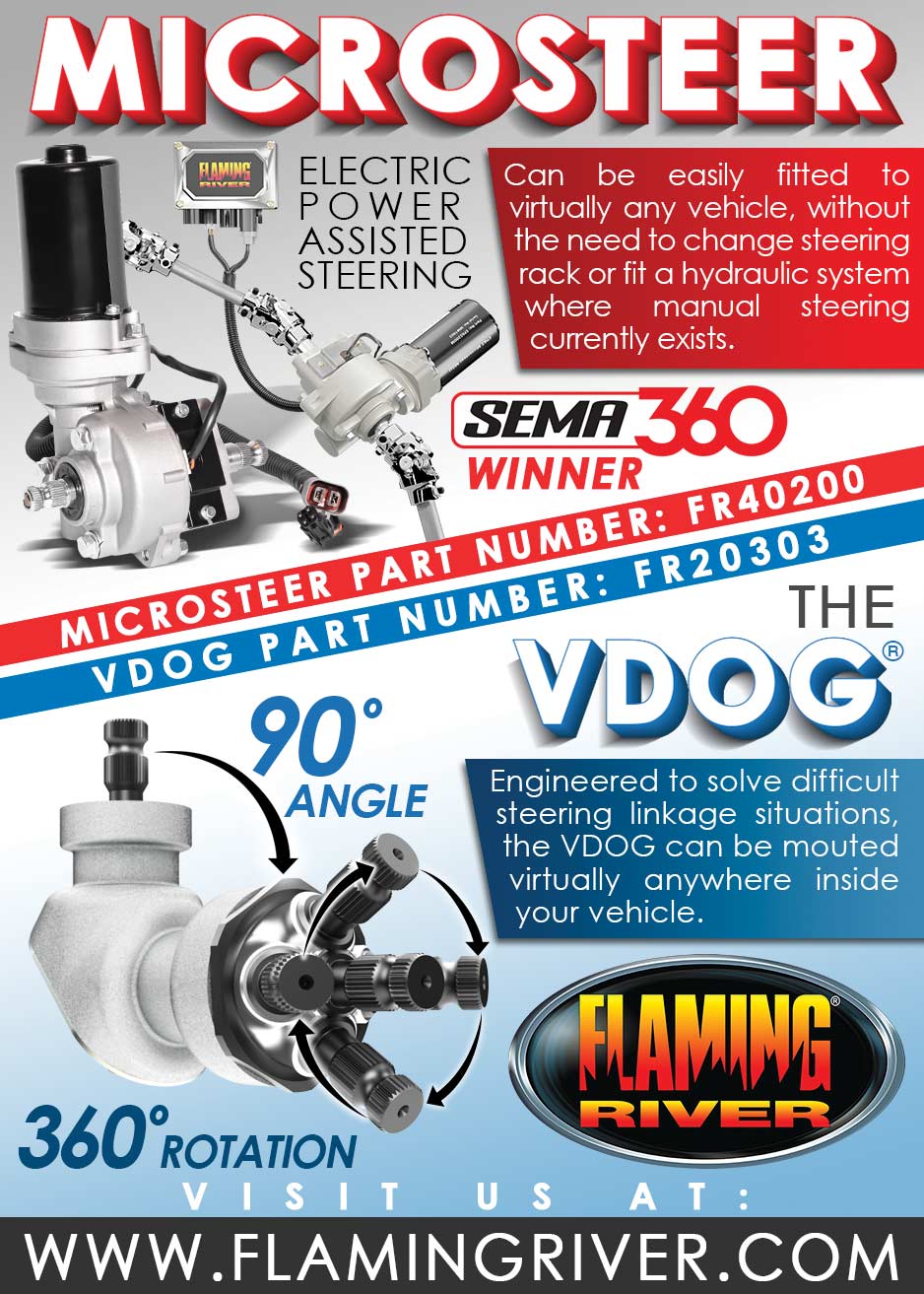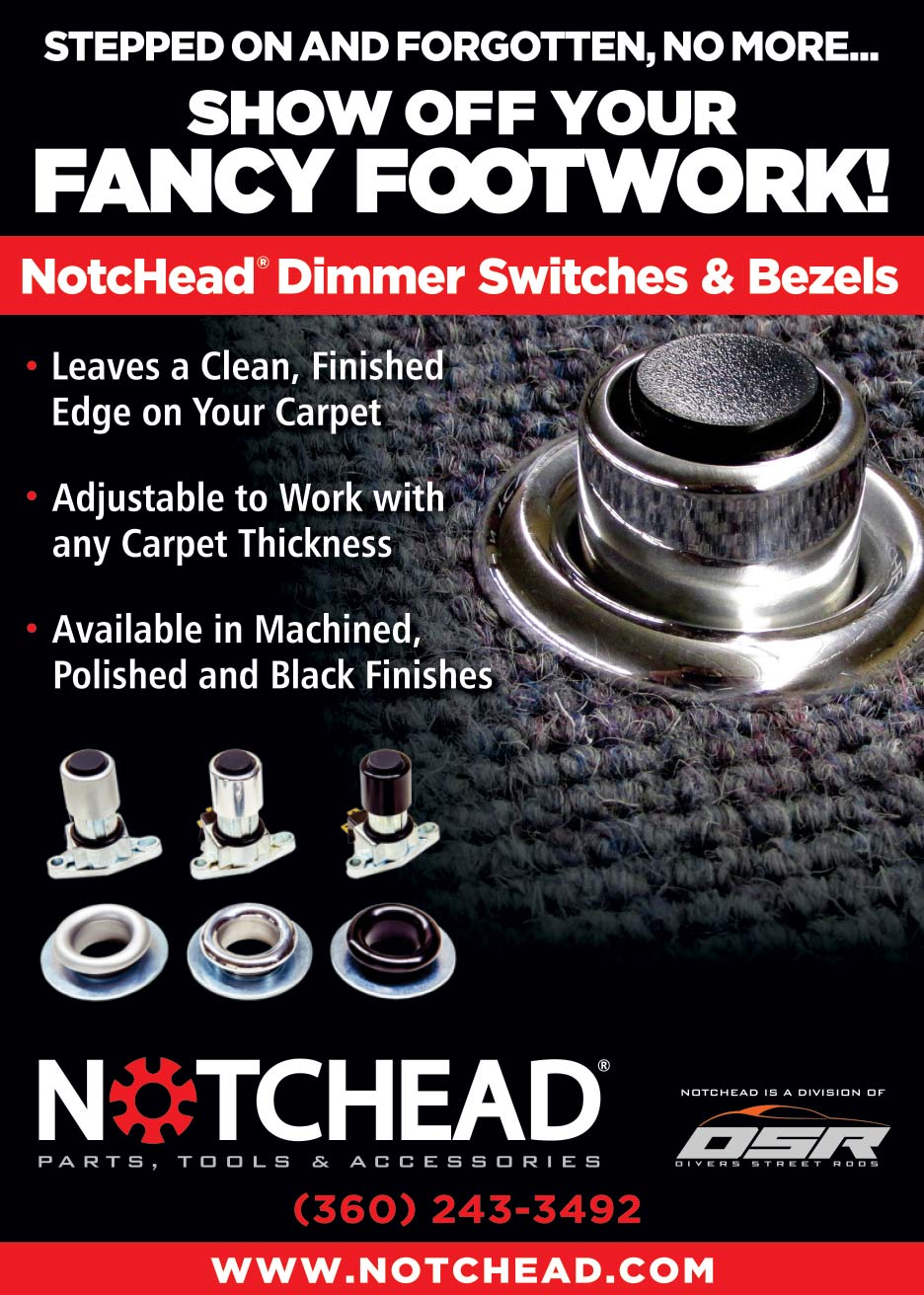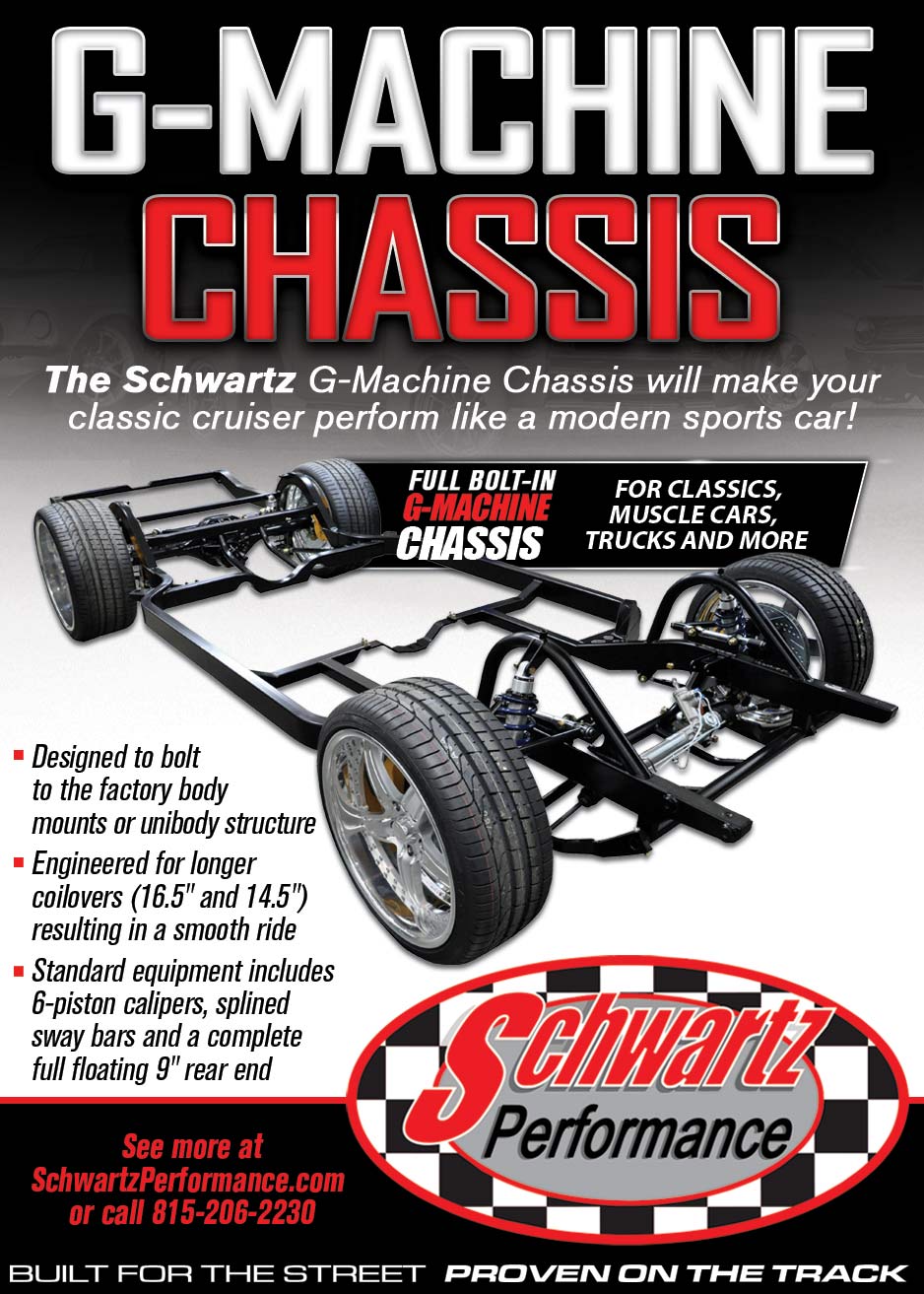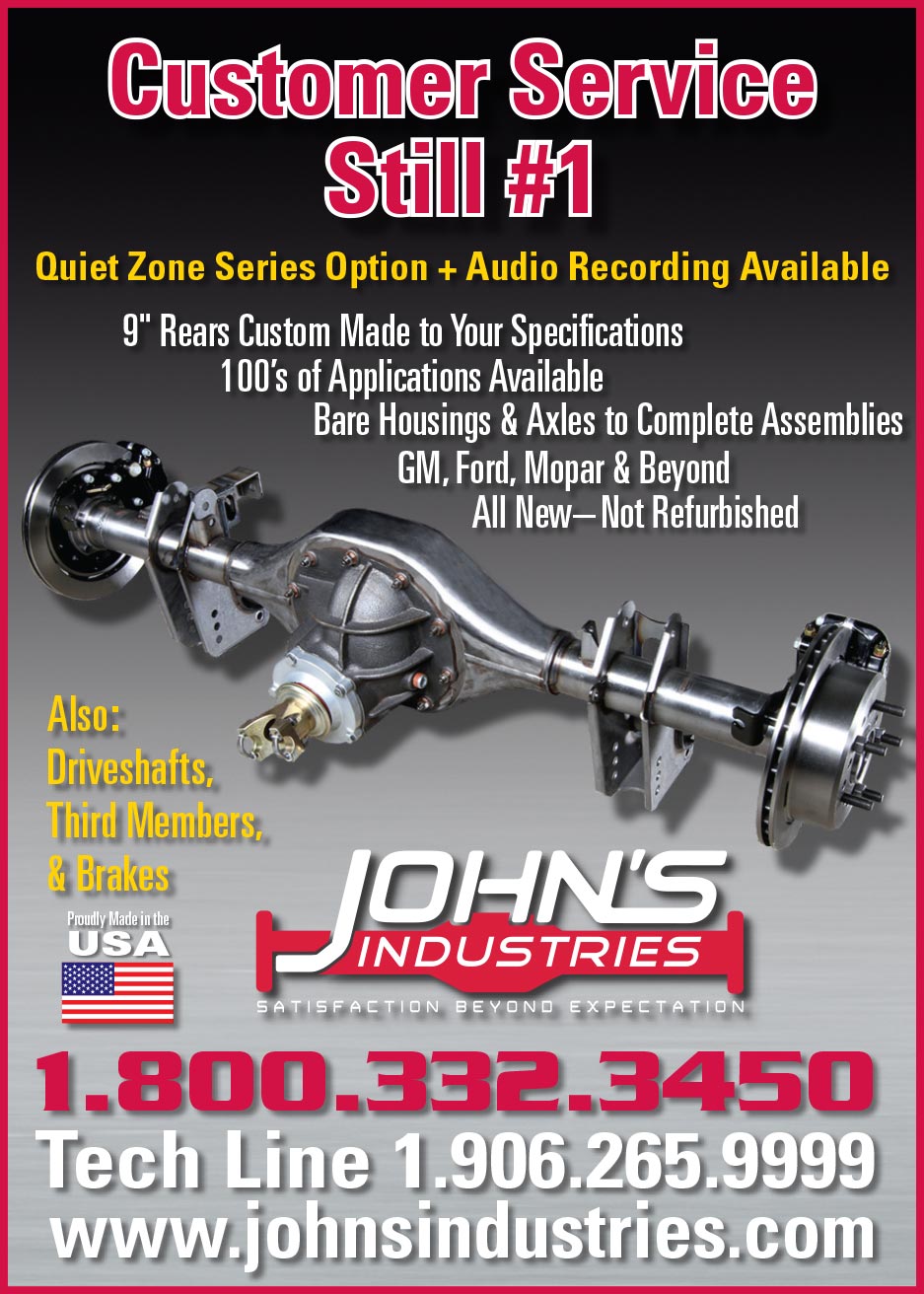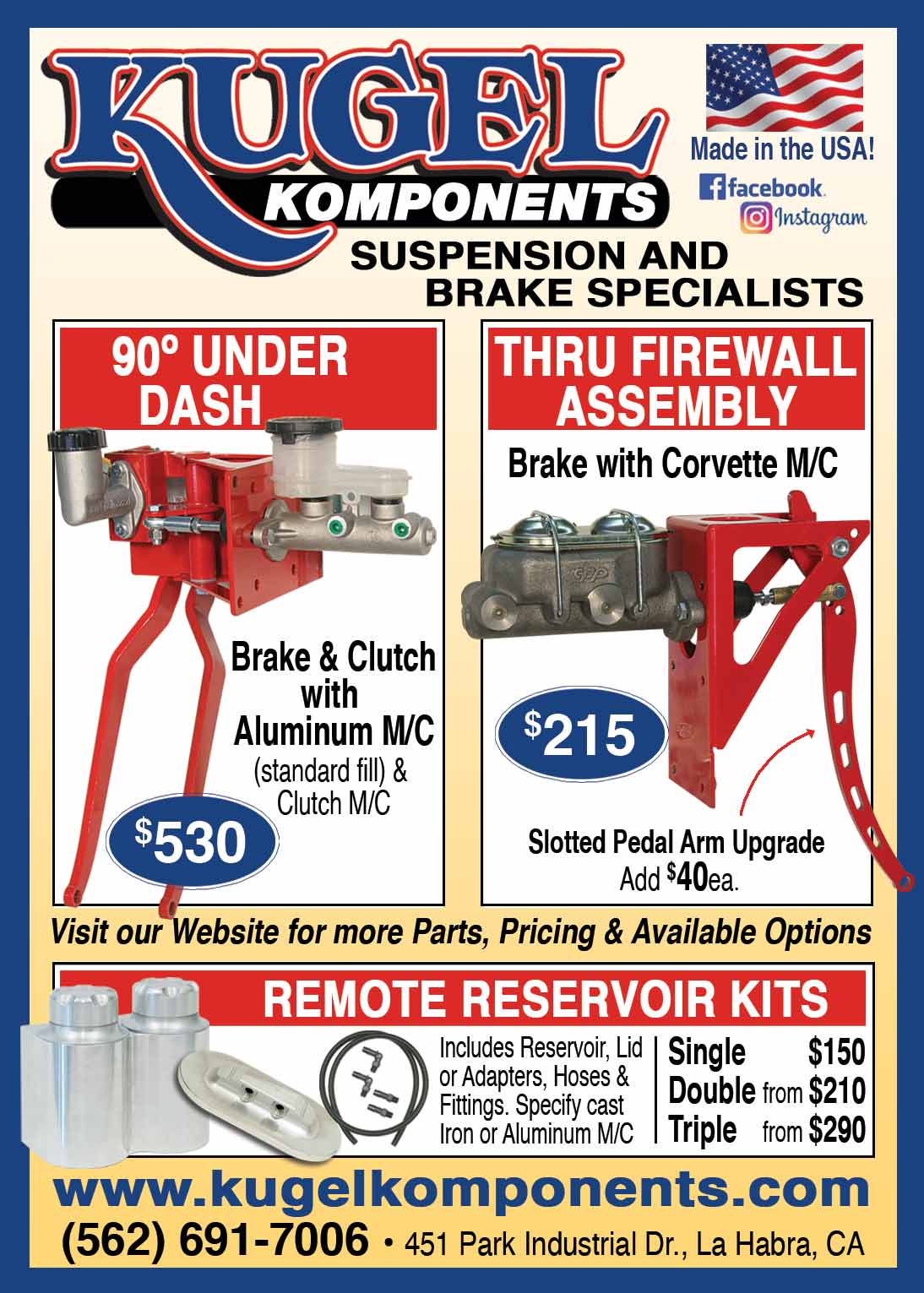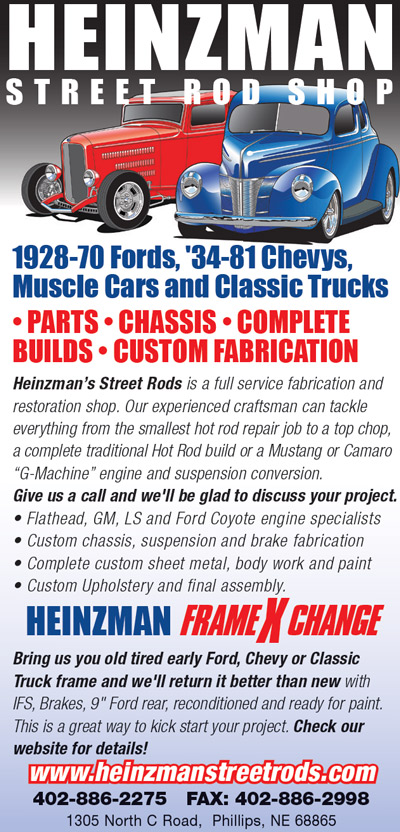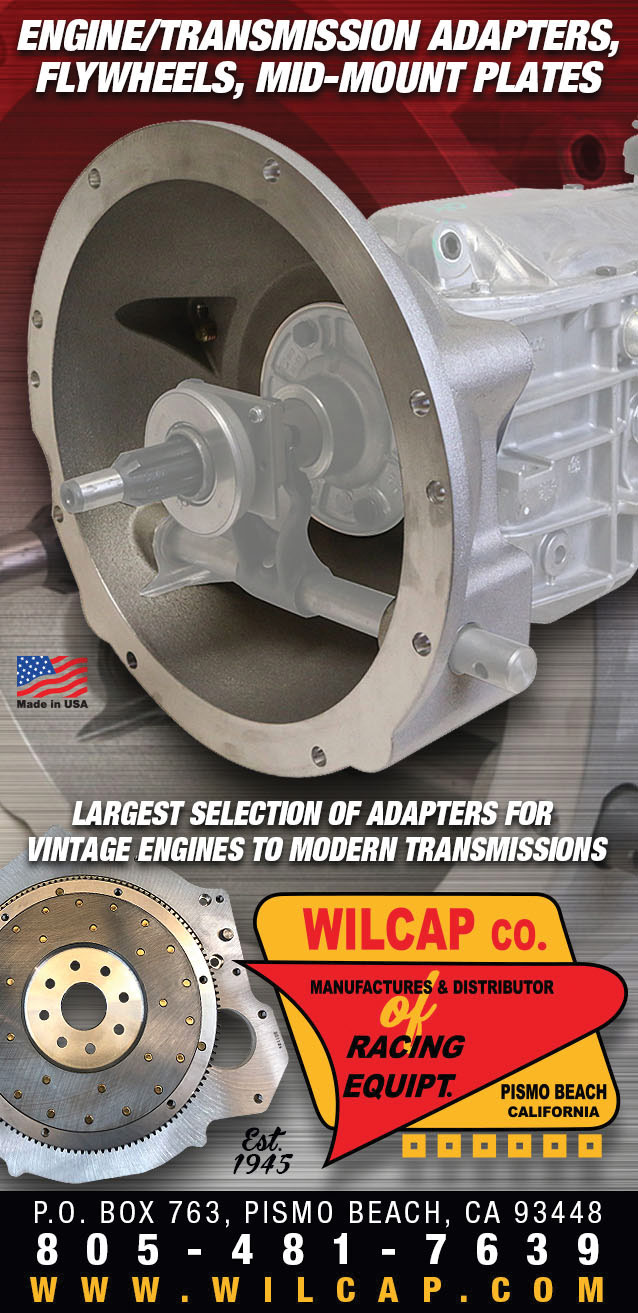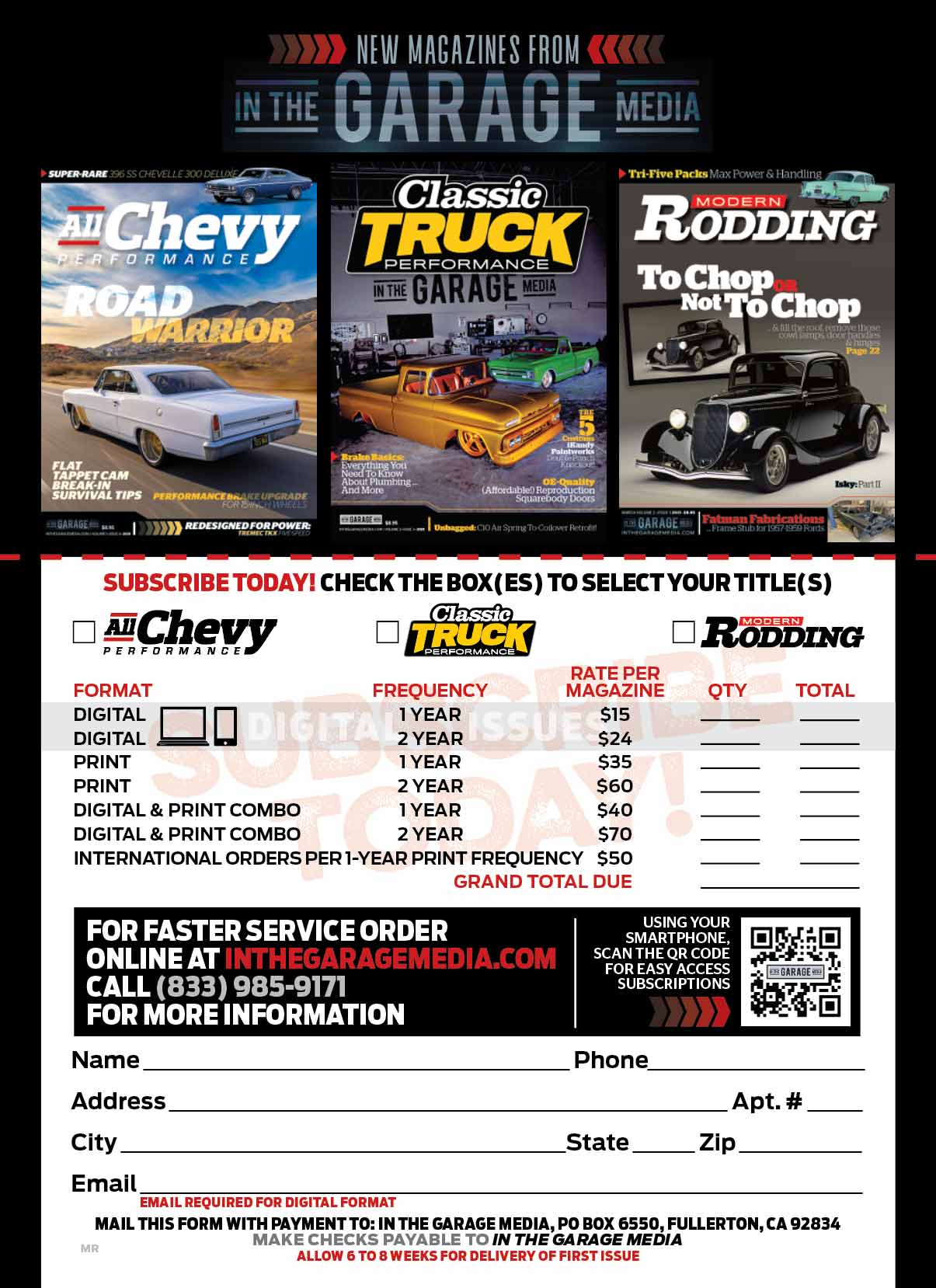

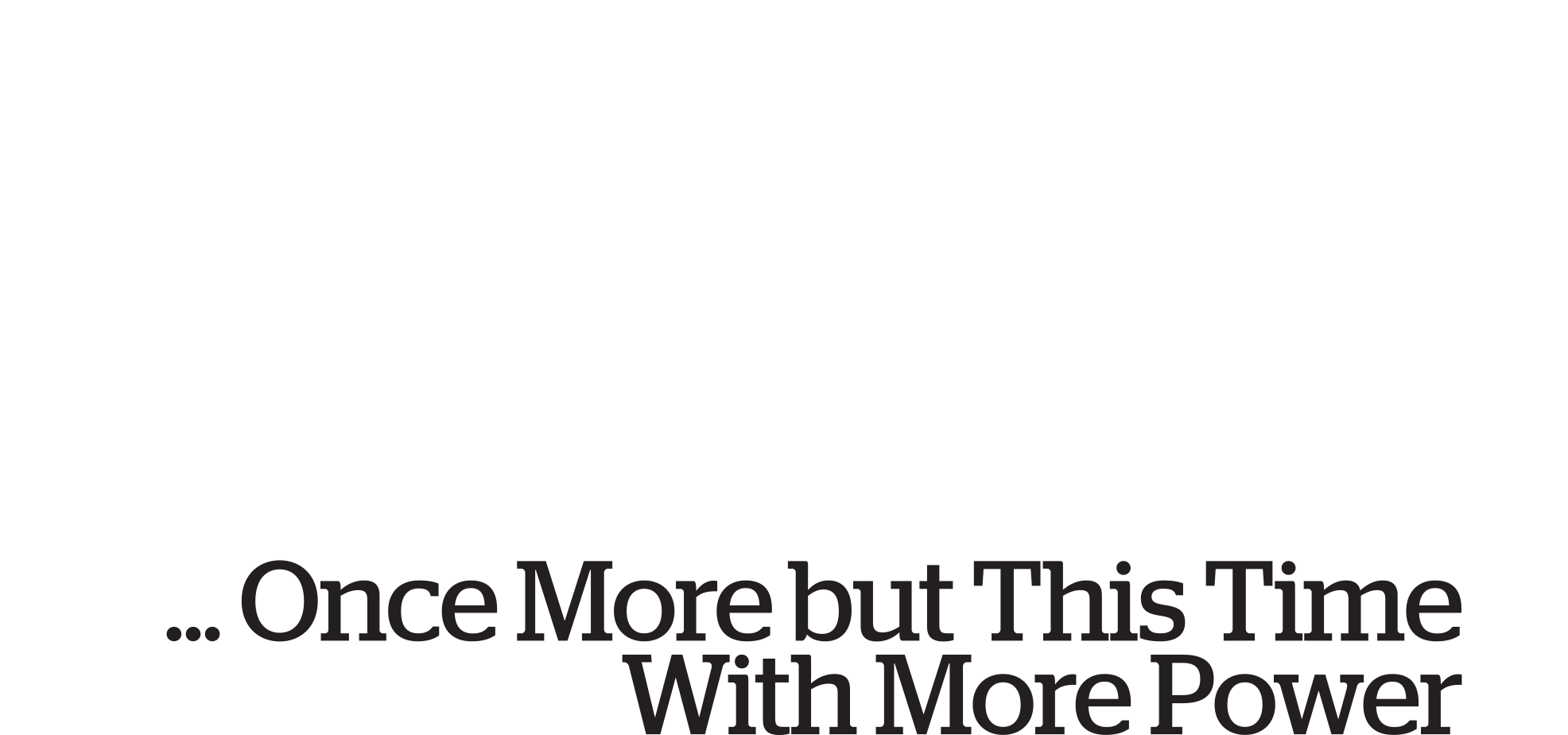
worn-out
& Tired
Kingpins
Cover a Blower Motor
… Fab an Extended Hood


By Brian Brennan, Photography & Video by John Jackson

By Brian Brennan, Photography by John Jackson
By Brian Brennan, Photography by Michael Christensen
By Chuck Vranas, Photography & Video by the Author
By Chuck Vranas, Photography & Video by the Author
By Brian Brennan, Photography by the Author
By Gerry Burger, Photography by the Author
By Brian Brennan
By Ryan Manson, Photography by the Author
By James Handy, Photography by the Author & Cheryl Denton
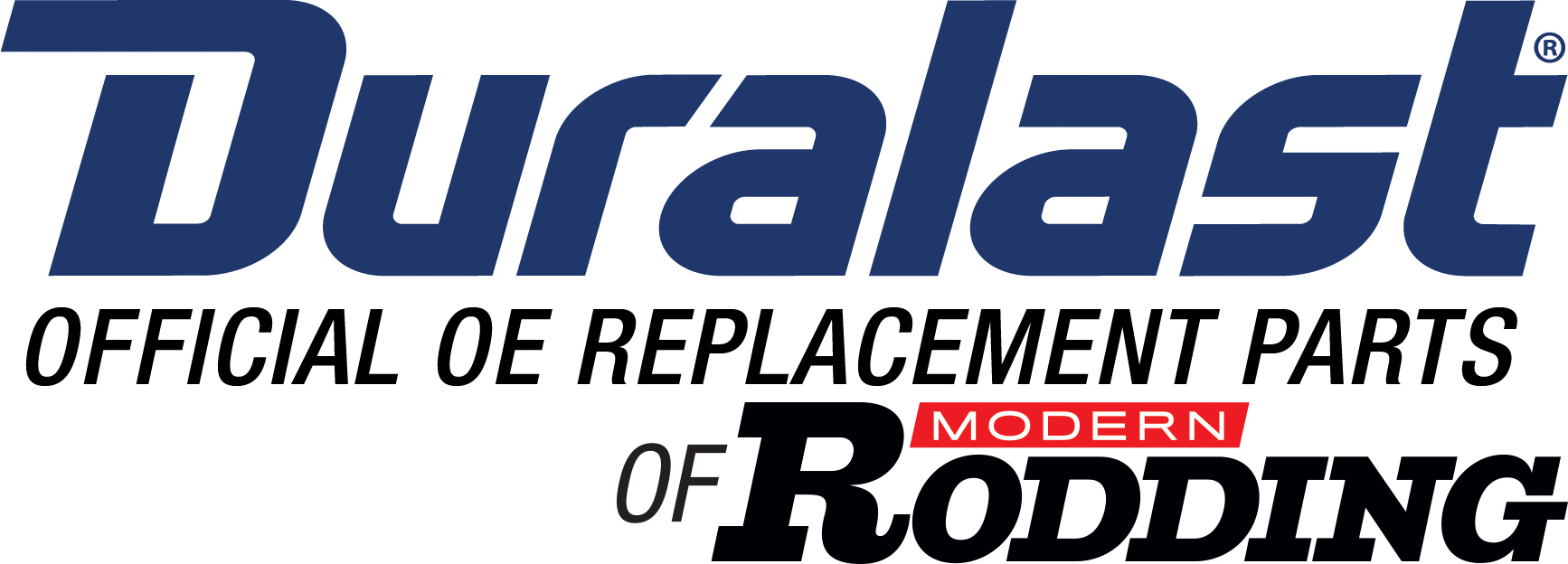

BRIAN BRENNAN
bbrennan@inthegaragemedia.com
TIM FOSS
tfoss@inthegaragemedia.com
YASMIN FAJATIN
yfajatin@inthegaragemedia.com
SARAH GONZALES
sgonzales@inthegaragemedia.com
ROB MUNOZ
Wes Allison, Rodney Bauman, Gerry Burger, Tommy Lee Byrd, Ron Ceridono, Michael Christensen, Ron Covell, Grant Cox, Dominic Damato, John Drummond, Eric Geisert, John Gilbert, Joe Greeves, John Jackson, Chadly Johnson, Barry Kluczyk, Scotty Lachenauer, Ryan Manson, Josh Mishler, Todd Ryden, Jason Scudelleri, Chris Shelton, Tim Sutton, Chuck Vranas, John Winter — Writers and Photographers
AllChevyPerformance.com
ClassicTruckPerformance.com
ModernRodding.com
InTheGarageMedia.com
Mark Dewey National Sales Manager
Janeen Kirby Sales Representative
Patrick Walsh Sales Representative
Travis Weeks Sales Representative
ads@inthegaragemedia.com
inthegaragemedia.com “Online Store”

Copyright (c) 2021 IN THE GARAGE MEDIA.
PRINTED IN THE USA.
Modern Rodding is changing our “issue number” system to be a consecutive numbering system. Starting with this issue, you will see a growing issue number that will carryover into each new year (in this issue #8, as this is the eighth issue of Modern Rodding) rather than the previous format (#5 to match the fifth month of May).
 By Brian Brennan
By Brian Brennan 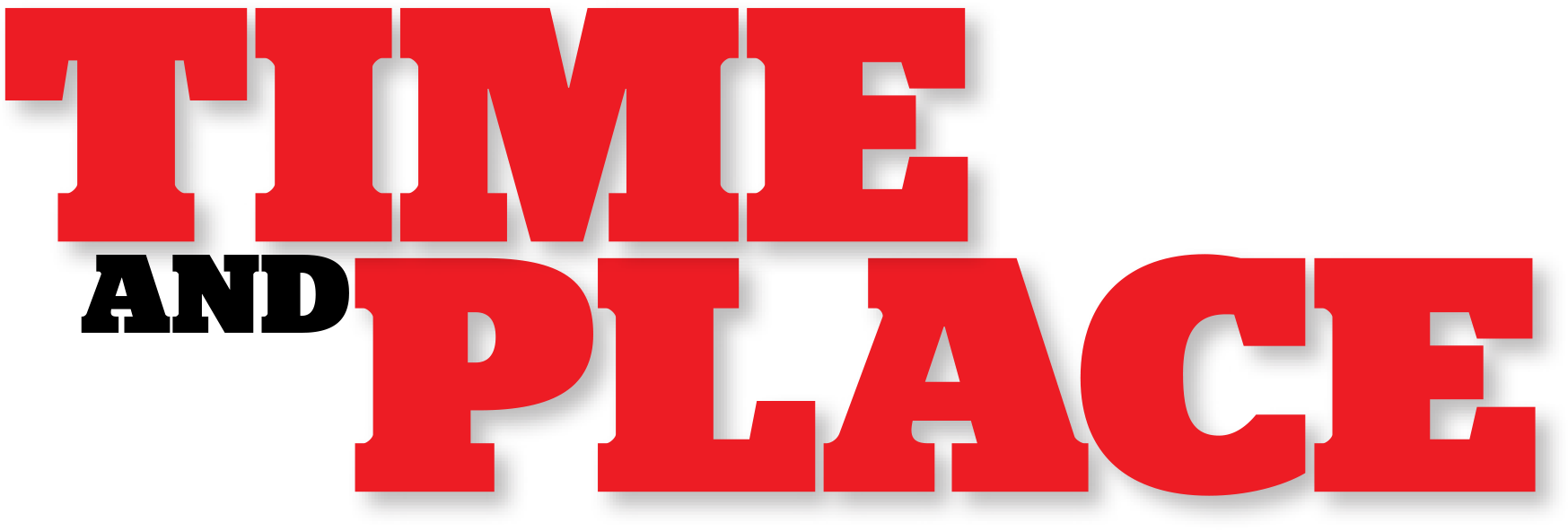
ll of us at some time or another have romped on the throttle and experienced an encounter with another hot rod on the street. It’s all fun and games and we considered it part and parcel of our youth, an integral part of growing up. At least that’s how we justified it. Times haven’t changed, it was as wrong and treacherous then as it is now.
Street racing has long been a rite of passage. All of us reading this editorial know of what I speak, regardless of its lack of social responsibility. Our hot rods are more powerful on the whole than the cars driven by the general public. What does all this mean? Our hot rods are like tools: The more proficient you become with a tool the more effectively (and safely) you should use it—and the results will be reflective. But that’s not what’s happening.
I know I have heard about street racing from back in the ’30s and ’40s from our earliest hot rod heroes. Bad things happened then and, regrettably, some were hurt who were nothing more than an innocent bystander. Here we are closing in on a century later and what happened then is occurring now. But with more forceful and significantly alarming results.
 In The Garage: Fred Warren
In The Garage: Fred Warren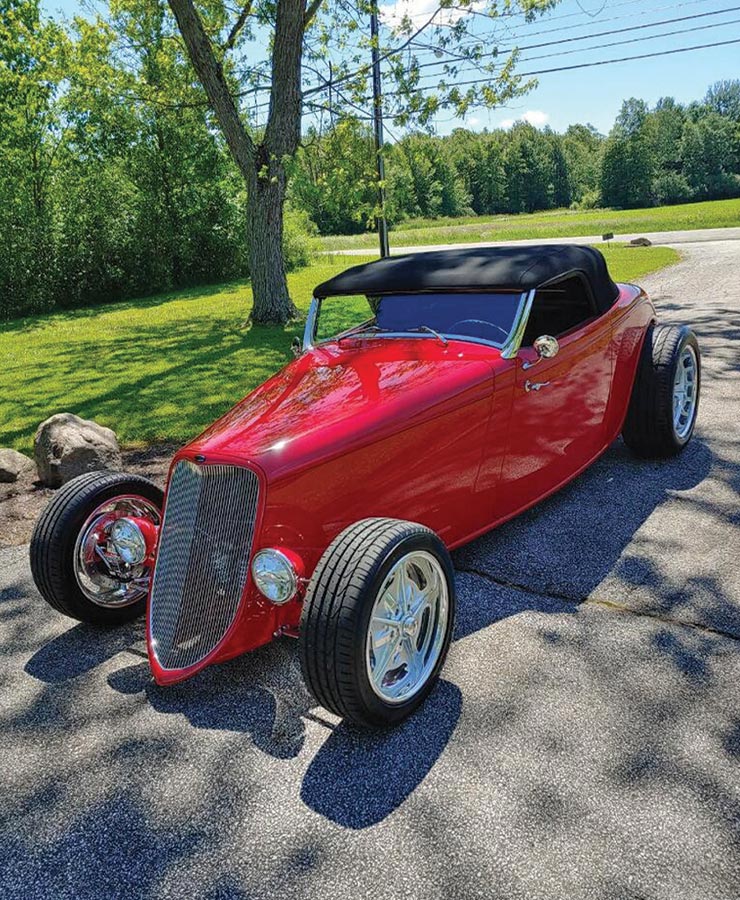
PHRF built the custom frame that holds an LS3 with a 4L70 nestled between a Kugel Komponents IFS and IRS fully polished, featuring Wilwood disc brakes all around. More “around the horn” accessories include the Billet Specialties polished 17s in front and 20s in back with Pirelli P Zero rubber, measuring 205/50R16 and 295/45R20.
Mounted to the custom chassis is a Speed33 convertible body with a black top. The body and custom PHRF hood are filled with mods and then sprayed in a custom-mix red from PPG. The interior is stitched in a black leather by Dean Alexander of Hot Rod Garage. Also, inside are Classic Instruments gauges, Vintage Air A/C, ididit column with a Billet Specialties wheel, American Autowire system, Juliano’s seatbelts, and a trunk-mounted Optima battery.

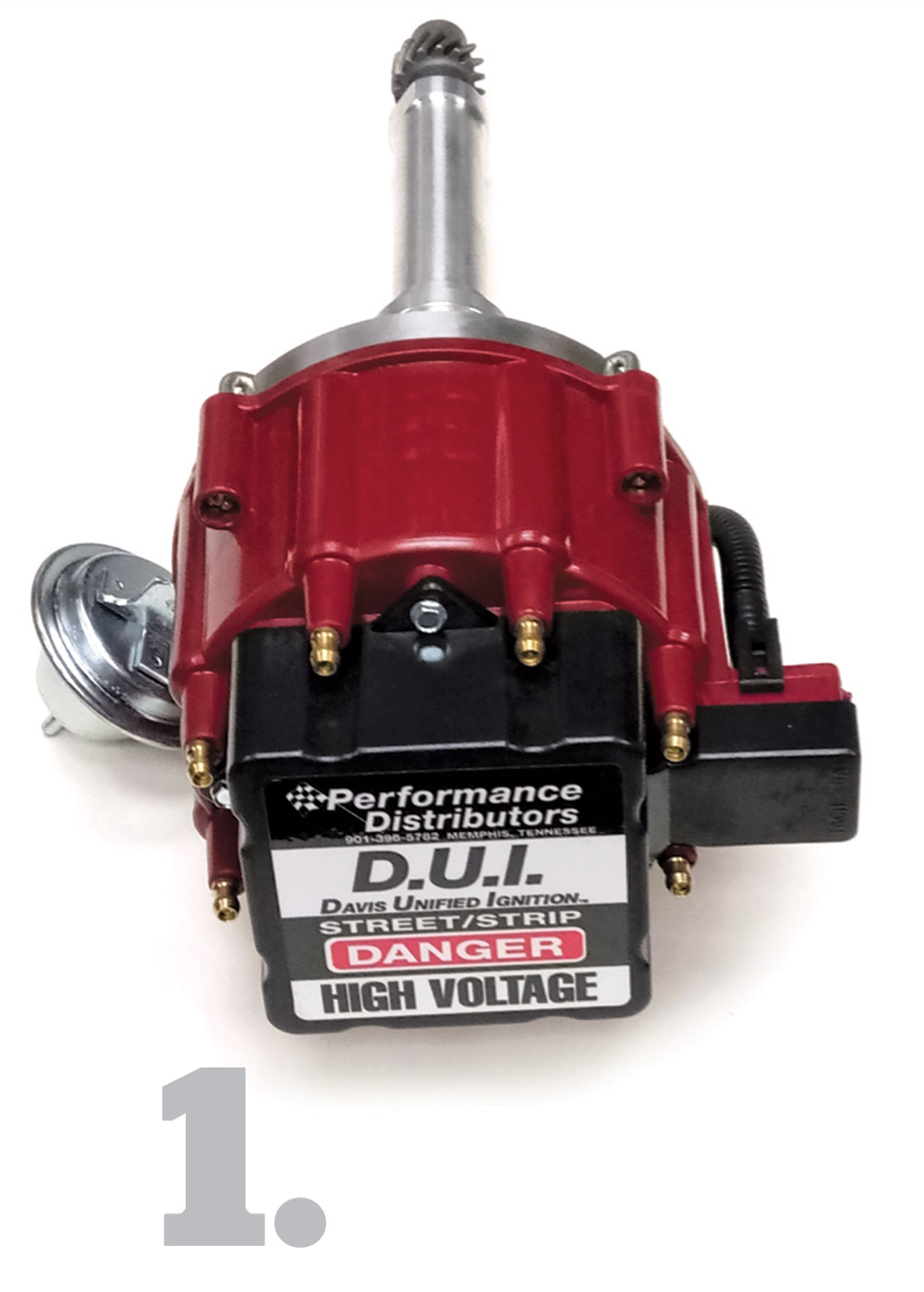
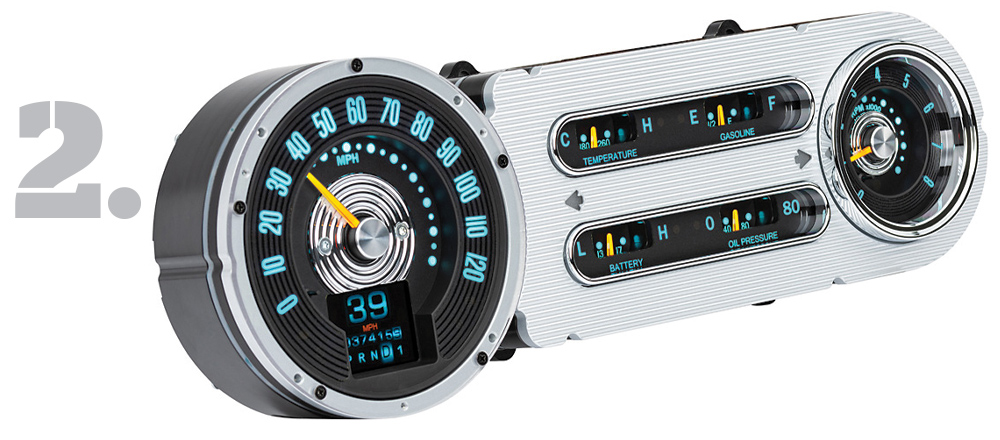

Performance Distributors calibrates the advance curve on a distributor machine to accommodate the timing requirements of these unique engines. The optimized curve provides instant throttle response and maximum performance throughout your rpm range while protecting your engine from detonation. There are two versions available: a street/strip version fires to 7,000 rpm while the Racing version fires to 10,000 rpm.
The distributor comes complete, including the Street/Strip D.U.I. coil (or Racing coil) and Dyna-Module. An additional step that also ensures maximum magnetic pick-up coil power is the hand setting of the endplay between the distributor gear and the distributor housing. Proper lubrication of the D.U.I. distributor, along with test firing of the electronic components, provide you with not only an excellent-performing ignition system but a reliable one.
This six-gauge system includes a new machined rear gauge housing that attaches directly to the backside of the stock front dash bezel. Hidden behind this assembly, the stock steel dash will require trimming for clearance. Styled after the original equipment found in the 1953-1954 cars, all backlight options are user selectable within the RTX Series.
The 1953-1954 Chevrolet car RTX system carries PN RTX-53C-X while the 1953-1954 Chevrolet car RTX System-Metric/Custom variations carries PN RTX-53C.
Standard features include one-piece, 2×4-inch box tubing crossmember; frame boxing plates; 1-1/8-inch DOM tubing upper and lower A-arms; stainless steel, fully adjustable upper A-arm rod ends; oversized, serviceable press-in ball joints; Aldan American single-adjustable coilovers or Slam Specialties SS-6 airbags with RideTech HQ Series single-adjustable shocks; 11-inch rotors with single-piston GM calipers; manual rack-and-pinion steering; choice of stock-height, 2-inch drop or 4-inch drop forged steel spindles. There are the options available: power rack-and-pinion steering, Wilwood disc brake kit, Aldan double-adjustable coilovers, RideTech double- or triple-adjustable coilovers, and torsion-spline solid sway bar.
summitracing.com.

 Photography & Videography by John Jackson
Photography & Videography by John Jacksonoe and Josh Bailey, a father and son team, are no strangers to hot rods of any make or year; when it comes to Chevys, especially Tri-Fives, these boys “stand tall.” Over the years they have built a number of them. Back in 2015 Joe’s 1956 210 took home the Tri-Five of the Year honors at the American Tri-Five Association’s inaugural event in Bowling Green.
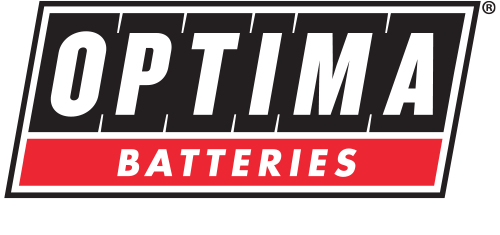


 Photography & Videography by John Jackson
Photography & Videography by John Jacksonoe and Josh Bailey, a father and son team, are no strangers to hot rods of any make or year; when it comes to Chevys, especially Tri-Fives, these boys “stand tall.” Over the years they have built a number of them. Back in 2015 Joe’s 1956 210 took home the Tri-Five of the Year honors at the American Tri-Five Association’s inaugural event in Bowling Green.


The Baileys’ day jobs are working at Alloway’s Hot Rod Shop. While the two of them perform a myriad of jobs, most days you can find Joe in the paint and detailing area working his magic while Josh is fabricating on a fresh build. Night, and all other free time, is spent working on their own projects. Turns out building a Tri-Five is the perfect father/son project and now that sufficient time had passed it was Josh’s turn to have his dream 1957 Chevy 210 Delray sedan. This time the “training motor” was kicked to the corner of the garage and in went the mack daddy of all Chevy big-blocks: the L88, or at least their adaptation.

 Photography By JOHN JACKSON
Photography By JOHN JACKSONoyle Thomas out of Texas is no stranger to hot rods of all years and makes. This time around he wanted something that was subtle to the eye yet potent when ordered. According to Doyle, “The car had to appear simple and plain and could slip through the night without drawing too much attention. Yet it had to handle the roads and definitely had to have enough power to motivate it when needed!” This 1957 Ford Custom is more than capable of fulfilling its bill of lading. According to builder Mike Rutter of Rutterz Rodz in Bristol, Tennessee, he knew exactly what was needed.


 Photography By JOHN JACKSON
Photography By JOHN JACKSONoyle Thomas out of Texas is no stranger to hot rods of all years and makes. This time around he wanted something that was subtle to the eye yet potent when ordered. According to Doyle, “The car had to appear simple and plain and could slip through the night without drawing too much attention. Yet it had to handle the roads and definitely had to have enough power to motivate it when needed!” This 1957 Ford Custom is more than capable of fulfilling its bill of lading. According to builder Mike Rutter of Rutterz Rodz in Bristol, Tennessee, he knew exactly what was needed.

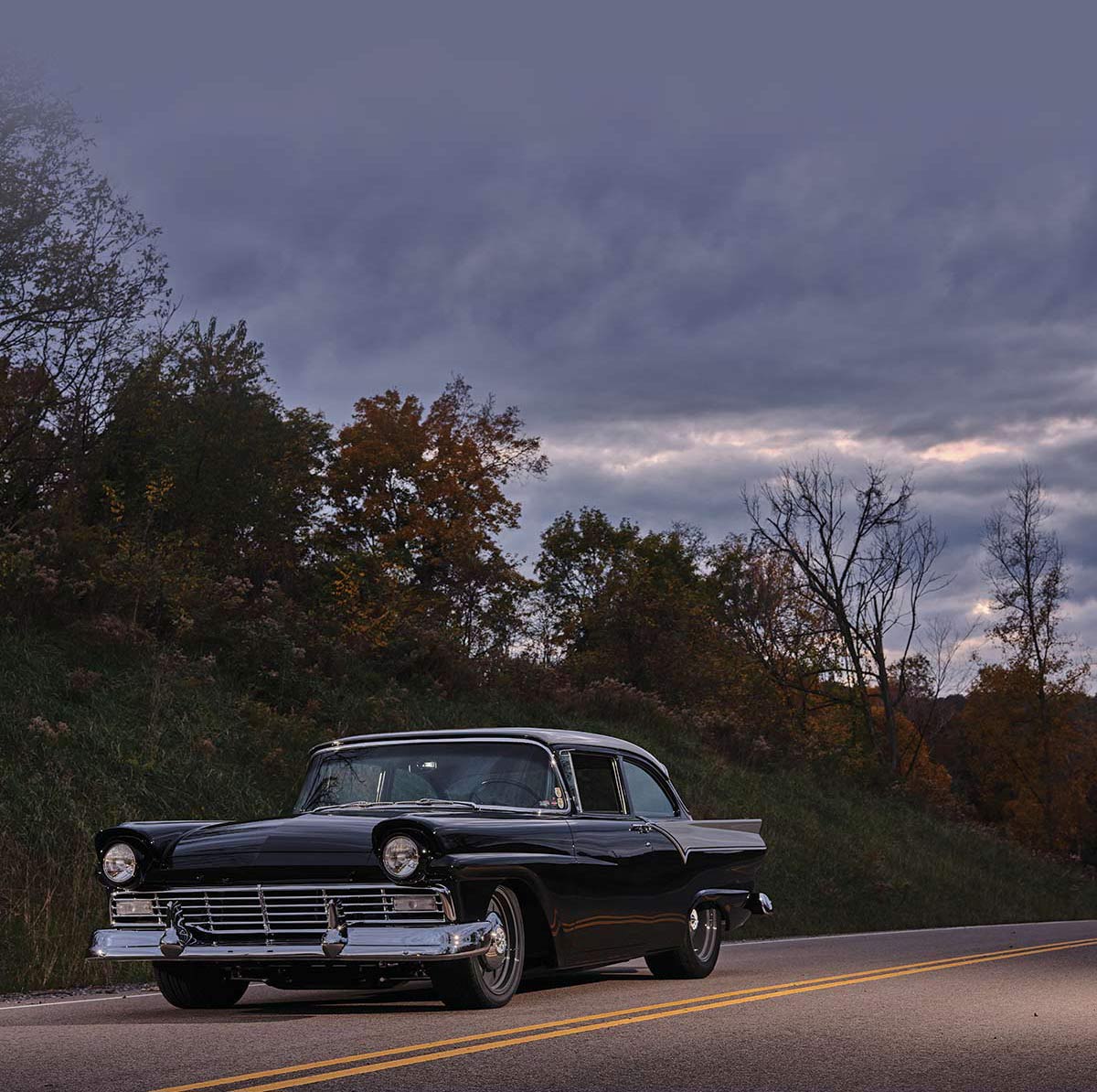
In the beginning, the 1957 Ford Custom came from a Texas-based friend of Doyle’s and had been socked away for years in a barn. Yet it was Doyle’s first remarks upon seeing the car that should give you a clue as to its condition. “You didn’t tell me the barn had no roof!” The 1957 Ford suffered from an abundance of rust that had ravaged the floorpan, trans tunnel, firewall, rear wheeltubs, and trunk. But there was more, as the bottoms of the fenders, rockers, and doors also suffered the wrath of rust. Fortuitously, these components were to undergo replacement or modification as the plans called for an Art Morrison Enterprises (AME) chassis to be slipped under the artist-inspired sheetmetal of Eric Brockmeyer.
We have chosen to refer to this hot rod as “Moonshine Runner” and, as such, a bit of history on the moonshiners of the past is in order. Many of us have some, if limited, knowledge of these oftentimes-colorful drivers and their cars. I’m guessing when all of us hear “moonshine car” we conjure up a 1940 Ford shod with oversized rubber, its deepened trunk, hefty commercial leaf springs, a beefy rearend, and as much power as could be squeezed out of an ol’ Ford Flathead. Yet it was these young men who learned what it meant to drive “wide-open throttle” on country roads, setting the groundwork for a world of performance to come. A healthy dose of youthful testosterone, fearless mental and emotional makeup, and little regard to what might happen should things go awry made these drivers and their cars legendary.
it Both
Ways
 Photography by THE AUTHOR
Photography by THE AUTHORt sounds like an oxymoron—“modern traditional”—but that appears to be what’s going on today when we take a knowledgeable look at what appears to be old-timey hot rods running the streets. There’s nothing like a traditional-built car. While traditional builds are true to form, adhering to the old-time look and performance via nostalgia parts and pieces, there’s also the modern-traditional build that visually replicates the bygone era look but taking “license” as to what’s required to get the job done for today’s look and performance.
And that’s where we find ourselves when taking a look at effectively the same car before us but with notable changes. A quick inspection tells us they aren’t the same, with each getting its own “point” across. In our story the basis for both hot rods is the Brookville Roadster steel 1932 Ford three-window coupe body. Both coupes are highboys, both have three pedals, both are chopped (well, the modern traditional is yet to be chopped but it’s coming), both run solid front axles (one an original tube and one a modern drilled I-beam), and both run a venerable version of the Chrysler Hemi (one vintage and one a modern V-8), but for all of the similarities there’s no mistaking they are 180-degree different approaches. Let’s take a look at what it takes to arrive at your destination from two different build routes. On a current visit to Veazie Bros. Fabrication (Evin and Justin) in Pomona, California, we found two similar but different builds. One was clearly the traditional execution and the second build showcases the modern traditional implementation.

 Photography by Michael Christensen
Photography by Michael Christensenhange is inevitable. Nick Testa, who lives in one of the SoCal beach communities, has a collection of Deuces that includes a roadster, a coupe, and a sedan. Where the 1932 comes up short is literally in legroom. Nick will tell you, as time has gone by, being comfortable for those cruises up and down the coast has become more and more important. There’s still the desire for the open air a roadster or convertible provides but enjoying the drive is now an important part of the equation.
Several years ago, Nick joined “forces” with Roy Brizio of Roy Brizio Street Rods and a Deuce roadster was the end result. In time, having walked the aisles of the Grand National Roadster Show, Nick saw the ASC Speed33 and over time became more and more fascinated with the looks and what appeared to be ample leg and body room. Next, Nick and Brizio came up with a plan to build one of these convertibles. What you see in front of you is the end result.
 By Gerry Burger
By Gerry Burgerill Sather has been around hot rods for a long time. Living in the Austin, Texas, area you just know he has an eye for traditional hot rods. Sather acquired this coupe a few years back as part of a trade. It was just an old 1934 five-window coupe body with typical battle scars but well worth saving. Sather purchased the chassis from a fellow in California, part of a stalled project, but Sather liked the magnesium Halibrand wheels, quick-change rearend, and the dropped front axle with hairpins. So, the coupe was mounted to a vintage hot rod chassis and with the top chopped it became the classic image of a bad-boy hot rod coupe. Oh, and did we mention Sather has a thing for blowers? Adding a BDS 6-71 blown small-block to the profile completed the hot rod packaging. There was just one problem, while the profile was there, the craftsmanship was not up to contemporary standards. A call to BBT Fabrications in Mahomet, Illinois, would take care of that problem. After talking with Troy Gudgel, Sather was certain he could come up with the perfect blend of old-school hot rod attitude and world class craftsmanship.
The coupe was shipped up to BBT Fabrications and work began. The metalwork was extensive and so we decided to follow along, starting with fitting the hood. The coupe came with an original four-piece hood but that was set aside in favor of a new three-piece Rootlieb hood. This three-piece configuration would allow for four vintage-style breathers to protrude through the hood. The hood sides carry stock louvers but without the lower body reveal and the two holes for the hood latch handles.
 Photography & Videography by THE AUTHOR
Photography & Videography by THE AUTHOR
or a young John Gagetta of Pittsburgh, Pennsylvania, discovering hot rods as a young teen in 1959 paved a path that led him on a lifelong journey—the pinnacle of which can be seen across our pages with his freshly completed 1932 Ford B-400.
His indoctrination started thanks to the sounds of a rumbling V-8 filled with a hot cam, leading him to a neighbor’s garage to discover a hopped-up 1932 Ford pickup packed with a 352ci Ford V-8 being worked on. Soon after, he fell under a spell of traditional hot rods that eventually led to weekly visits to Pittsburgh International Dragway. Once he earned his license he began racing there as well as becoming part of the local street racing scene. There was always plenty of action happening nightly running across the iconic Westinghouse Bridge since it had a perfect 1/2-mile stretch, making it a great platform to see who ruled the streets on a regular basis.

 By Brian Brennan
By Brian Brennanetalwork is one of, if not, the most demanding projects any of us can undertake when working on our hot rod project. It can start out as a sheetmetal repair, patch panel replacement, right on up to rear quarter-panel replacement, which is one of the more ambitious projects to undertake.

 By Brian Brennan
By Brian Brennanetalwork is one of, if not, the most demanding projects any of us can undertake when working on our hot rod project. It can start out as a sheetmetal repair, patch panel replacement, right on up to rear quarter-panel replacement, which is one of the more ambitious projects to undertake.
The AMD sheetmetal is known for its OE condition, meaning that it’s stamped from high-quality OE gauge steel on AMD’s own tooling. Each quarter-panel displays features that are as correct as original shape, size, bends, curves, and body lines. Like all AMD parts, these items arrive EPD coated to help protect against rust and corrosion. (EPD stands for electrophoretic deposition. It’s an industrial process that includes electrocoating. E-coating, as it is commonly referred to, is an immersion wet paint process that uses electrical current to attract material, paint, to the metal surface.)

 Photography & Videography by THE AUTHOR
Photography & Videography by THE AUTHORothing makes a better impression on a youngster than taking them to a car show. Regardless of whether it’s a local cruise night, large national event, or the yearly pilgrimage to the Auto Show, it’s a surefire way to influence their formative years. For a young Rob Ninkovich of Foxboro, Massachusetts, growing up near Joliet, Illinois, the yearly countdown to February when the Auto Show was in town became a rite of passage. It’s a place where he and his dad, Mike, would spend the day studying the latest designs being offered while also dreaming of what they’d bring home if the sky was the limit. Easily, the freshly completed 1969 Buick Skylark Sport Coupe displayed across our pages brings many of his dreams to life in this alluring presentation.

 Photography & Videography by THE AUTHOR
Photography & Videography by THE AUTHORothing makes a better impression on a youngster than taking them to a car show. Regardless of whether it’s a local cruise night, large national event, or the yearly pilgrimage to the Auto Show, it’s a surefire way to influence their formative years. For a young Rob Ninkovich of Foxboro, Massachusetts, growing up near Joliet, Illinois, the yearly countdown to February when the Auto Show was in town became a rite of passage. It’s a place where he and his dad, Mike, would spend the day studying the latest designs being offered while also dreaming of what they’d bring home if the sky was the limit. Easily, the freshly completed 1969 Buick Skylark Sport Coupe displayed across our pages brings many of his dreams to life in this alluring presentation.
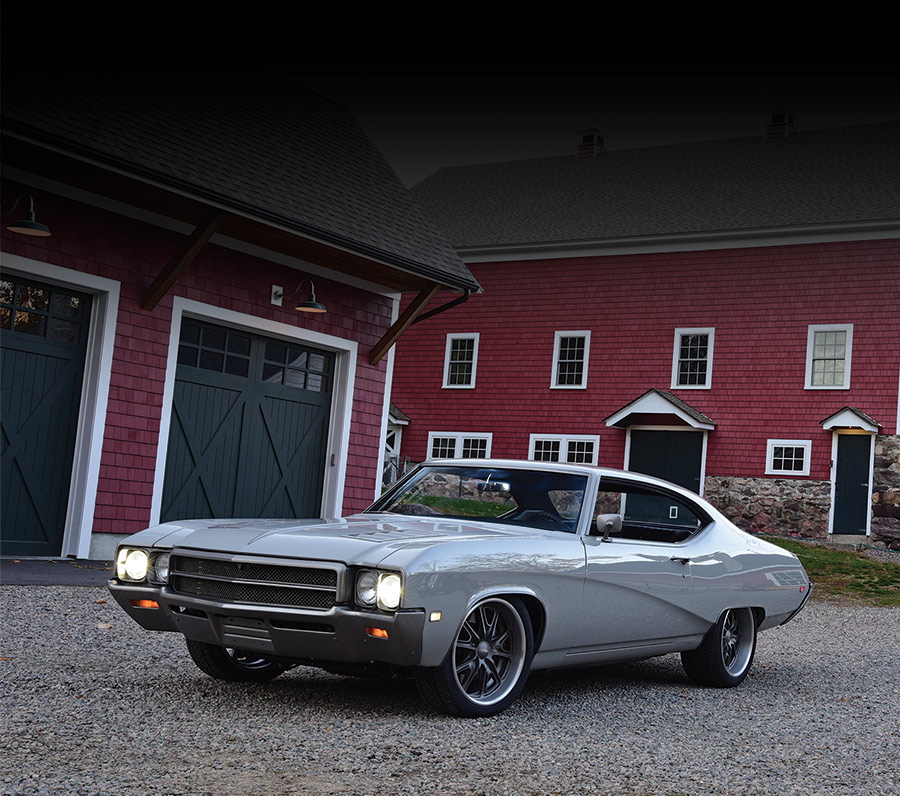
As the years passed, Rob went onto an 11-season career in the NFL, becoming a two-time Super Bowl Champion during his time spent as a member of the New England Patriots. One thing that never changed was his passion for performance cars, leading to a 2008 Corvette as well as a 2012 Camaro ZL1, however a fire still burned in the back of his mind for a classic muscle car. This eventually led to a restored 1970 Chevelle SS packing a 454ci big-block. While the car had plenty of brute force in a straight line, he longed for something that could also handle the curves and stop on a dime. Reaching back to his fascination with second-generation GM A-body muscle, it was time to take on the build of something that would be unique enough to stand out in a crowd.
 Photography by the Author
Photography by the Authortight frontend can make all the difference between an enjoyable early Ford and a downright rotten roach of a hot rod. A car that wanders around the lane, is hard to steer and control, or clunks, clangs, and creaks while going down the road is not only uncomfortable, it’s dangerous. Thankfully, early Fords are easy to work on, simple to fix, and easy to find parts for because of companies like Speedway Motors. They stock everything from aftermarket, modern upgrades to OE-style replacement parts for 1928-1948 Fords and beyond.
When it comes to restoring an early Ford frontend or solving any of those aforementioned issues, most attention is usually paid to the area of the kingpin. Over time this is usually the spot that has seen the majority of abuse and is one of only a few items on an Early Ford frontend that requires any kind of maintenance. Put simply, a kingpin attaches solidly to the straight axle via a lock pin and the spindle rotates around the kingpin on brass bushings. Years of regular use eventually wear the softer brass bushings down, allowing the spindle-to-kingpin clearance to increase, resulting in negative handling characteristics. Caught early, it was a simple manner of installing new brass bushings, honing them to match the kingpins, and reassembling the frontend. But many Early Fords were driven into the ground, scrapped, and then scavenged for useful parts. That means buying an old axle at the local swap meet can be a bit of a gamble. Oftentimes, the wear that first attacked those brass bushings, moved on to attack the axle, hogging the kingpin bores out to an undesirable shape. This makes the job of the restorer/rebuilder that much more difficult. Thankfully, there are solutions to even the most clapped-out early Ford axle, one of which bears little resemblance to the old bushing kingpin design.
View Index
View Index


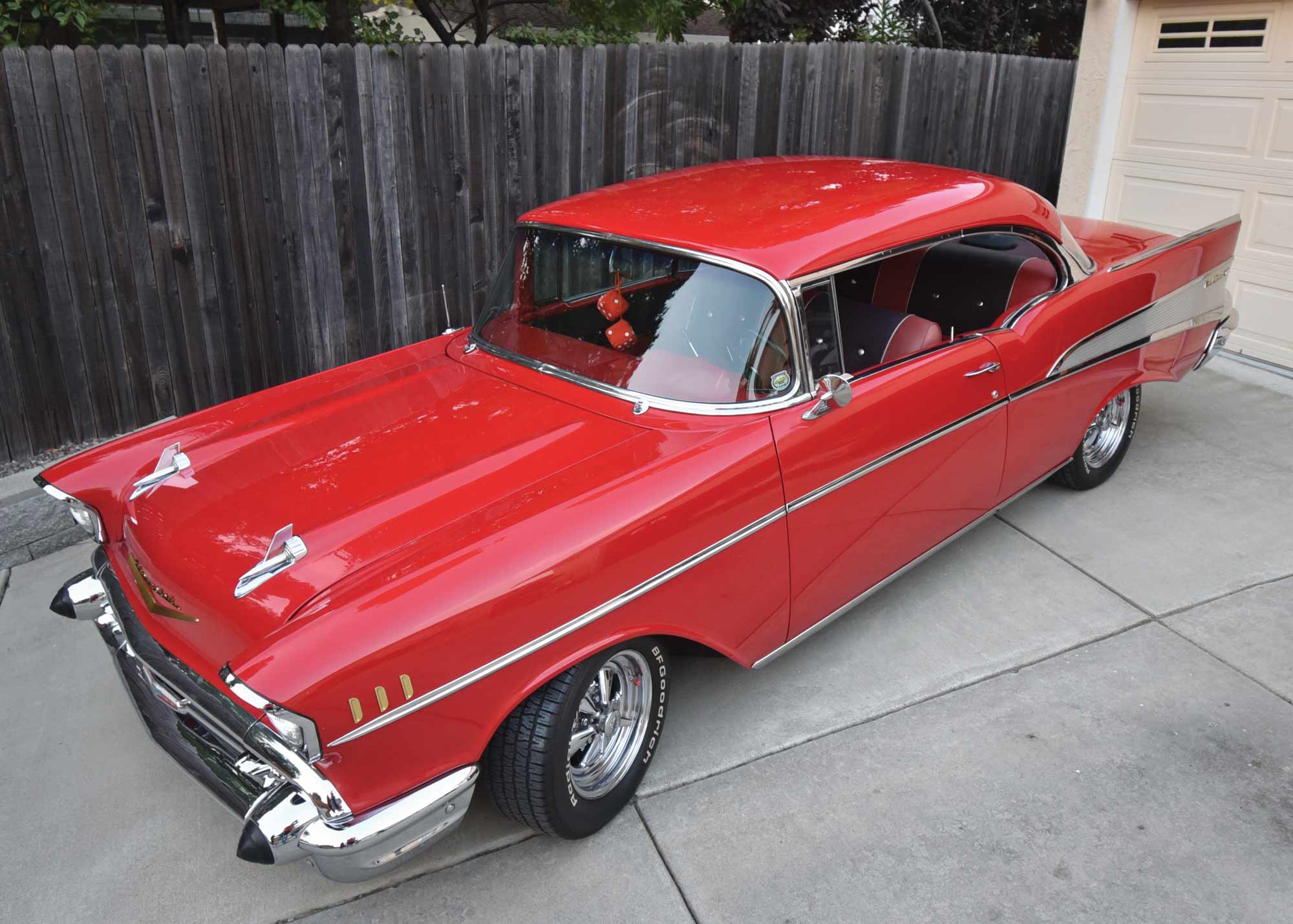
 Photography by THE AUTHOR and CHERYL DENTON
Photography by THE AUTHOR and CHERYL DENTONf you’ve been involved with old cars and hot rods as long as I have, you no doubt have heard stories about the barn find Plymouth Superbird or the 1951 Bonneville racer or the Corvette with 200 miles on the odometer that had been in storage since 1955. I have heard my share of them; some believable, most not. What you are about to read is the absolute truth. I know because I am the one who found the cars and bought them.
The saga started with a phone call on a cold November morning. Seems a business associate of mine had heard about a stash of old Chevys in a soon-to-be-demolished warehouse in Southern California. The story got more intriguing after a second phone call a few days later. As a machined parts buyer for a defense contractor many of my suppliers were in SoCal, so a “business trip” was soon arranged.
In the heart of Southern California, the custom car and hot rod capital of the entire free world (let them think that!) was a complex of old wood and corrugated tin buildings resembling a public storage lot that might have been built in the ’40s with leftover building materials. This place was a real work of art. Two acres of junk. Some was good car junk; most was just plain junk. The property owner led us through the dirt and mud to a side sliding door. The door partially opened with considerable effort to a dark and dingy 20×40-foot room. The silhouettes of five cars were barely visible. With a little more effort, the door opened wide.
